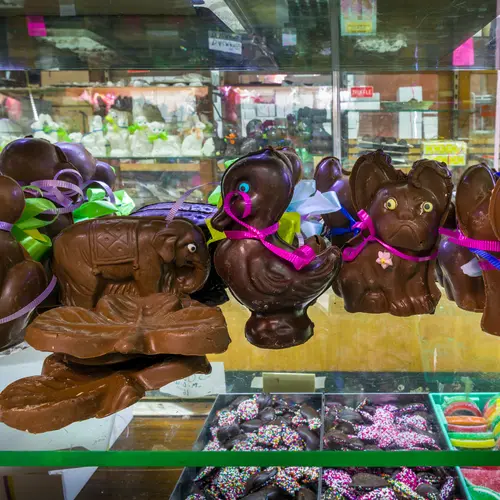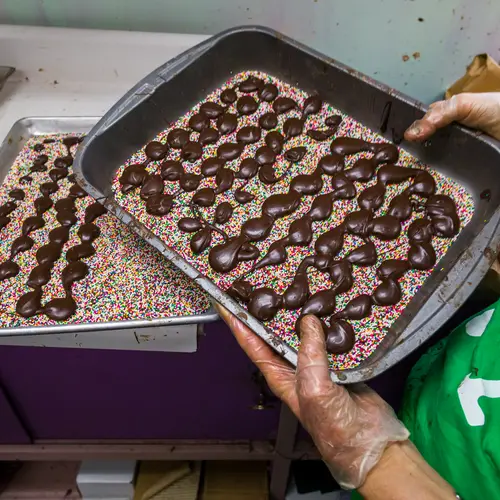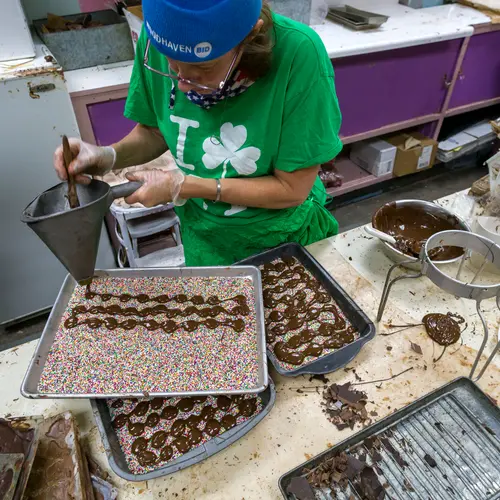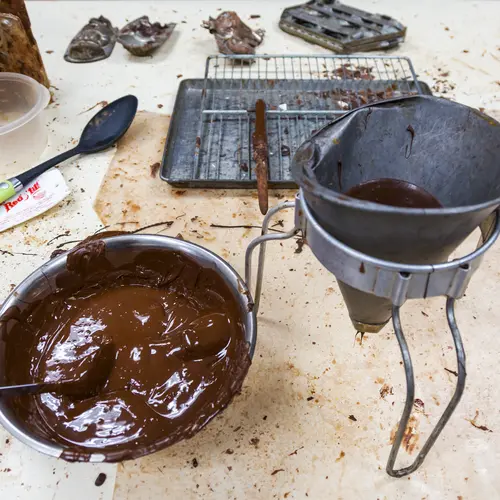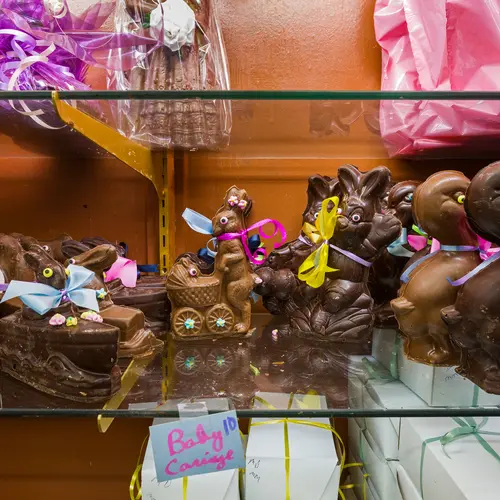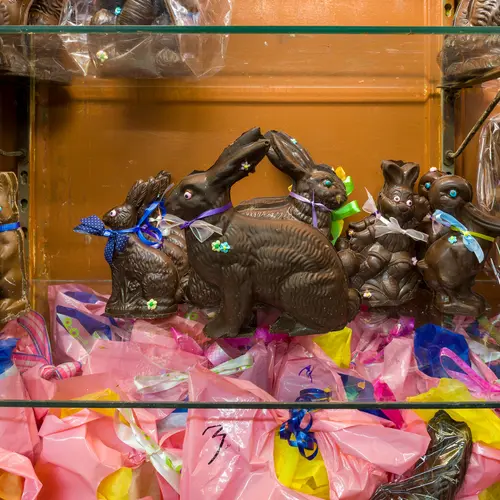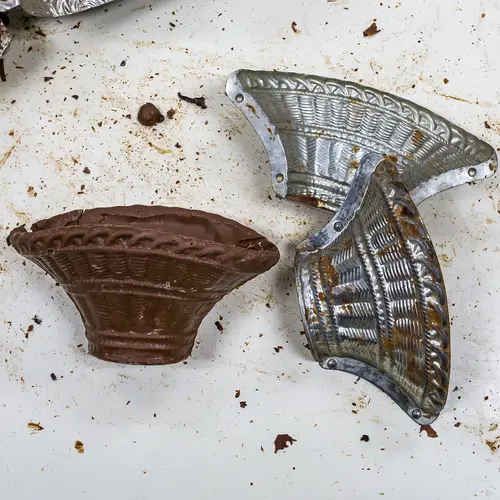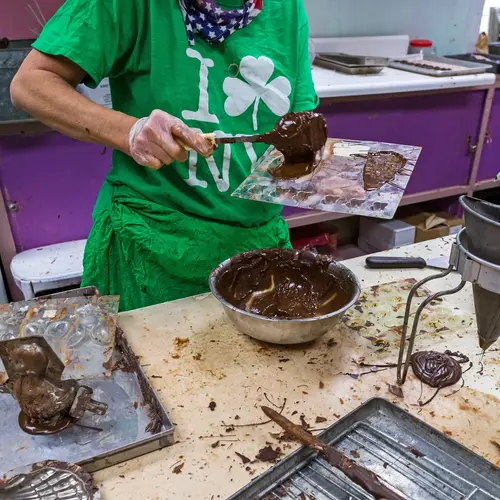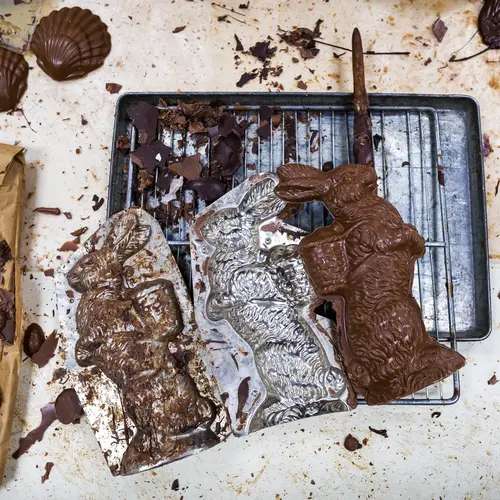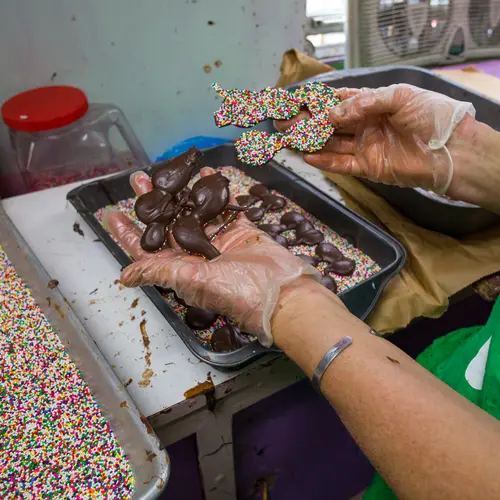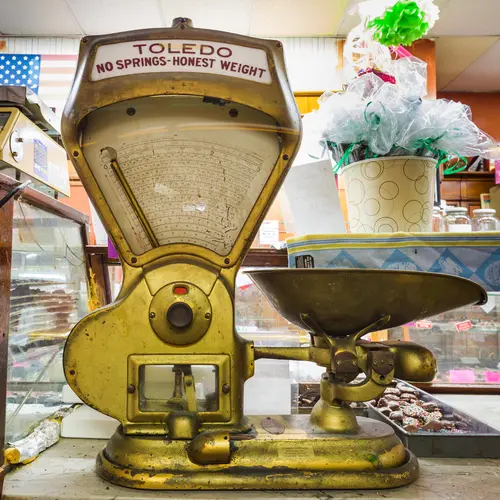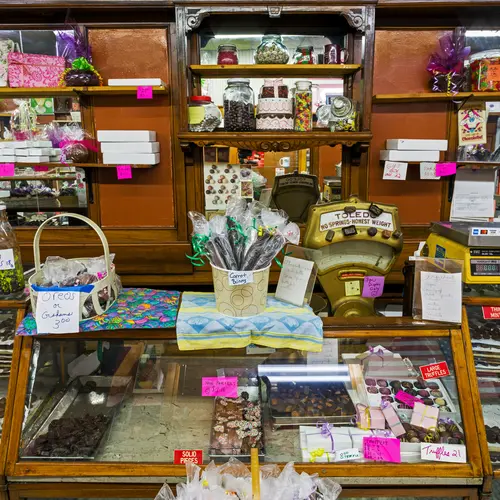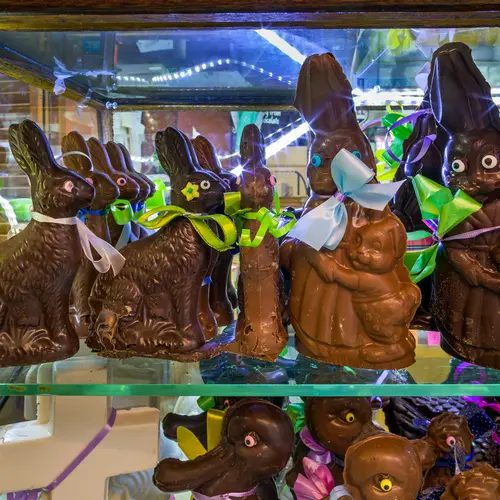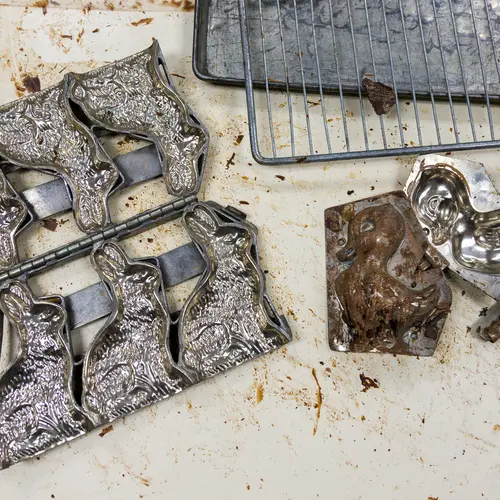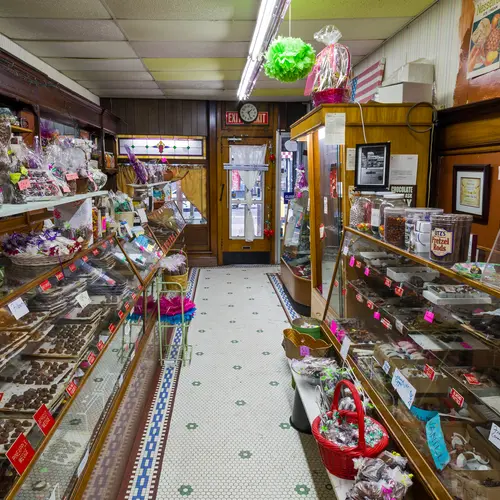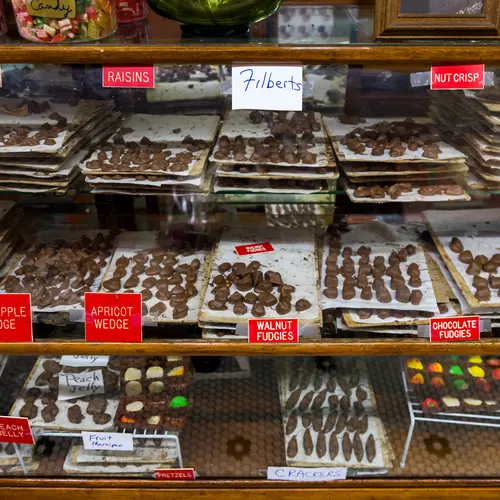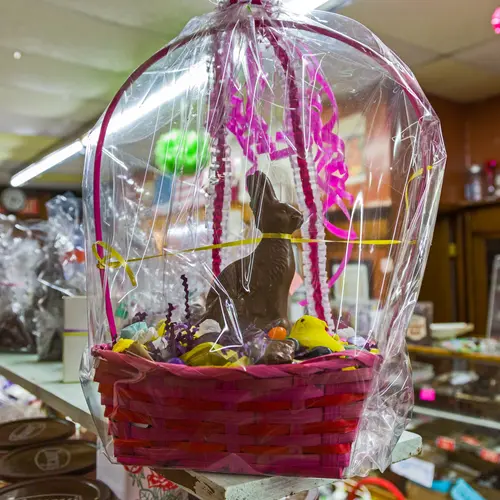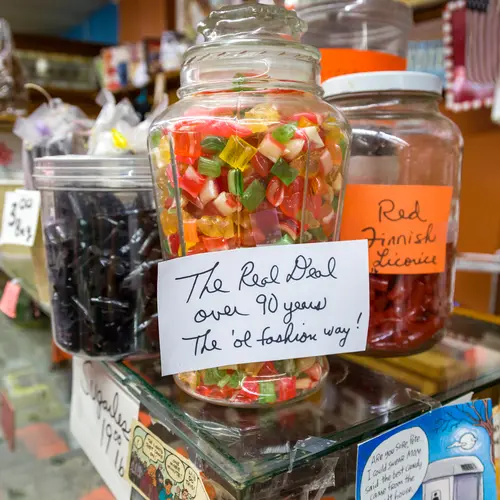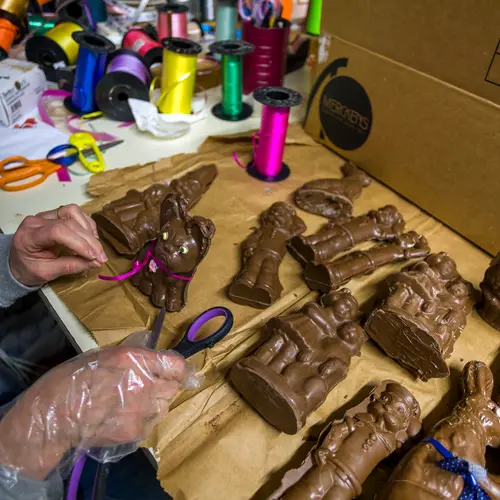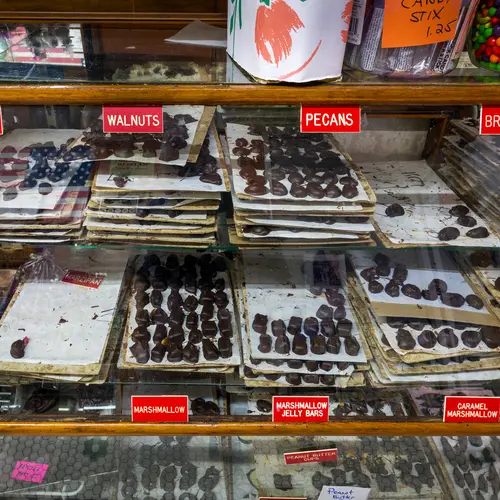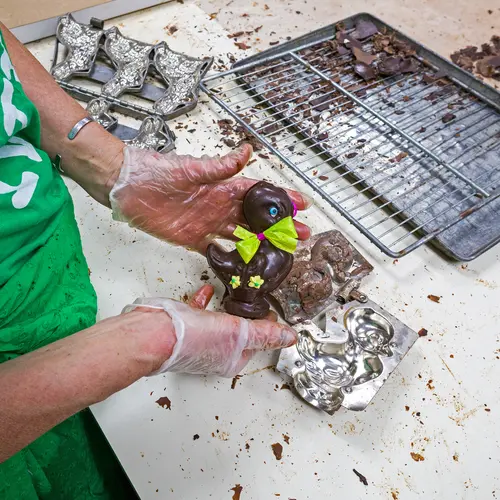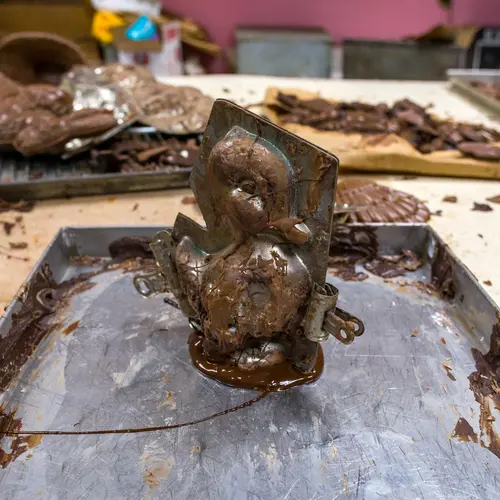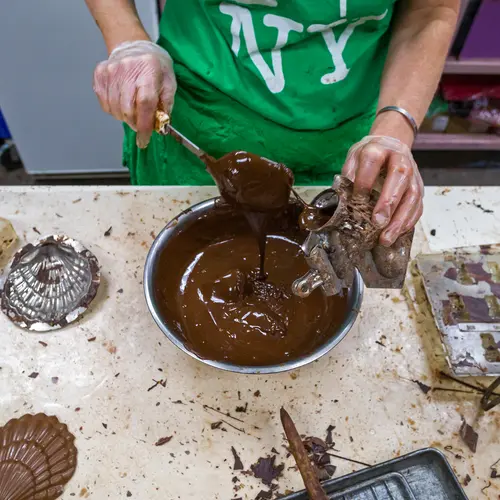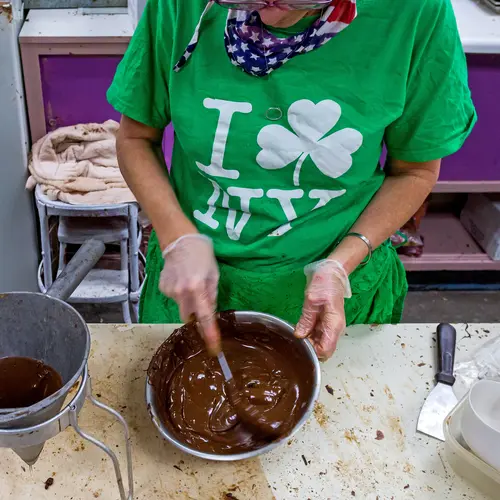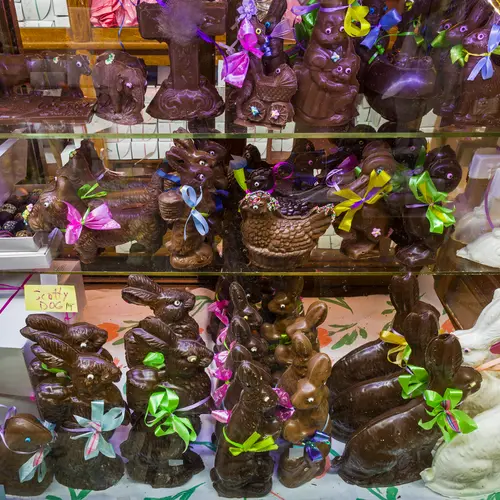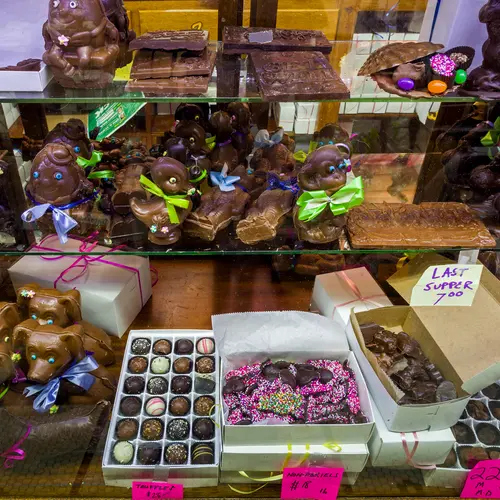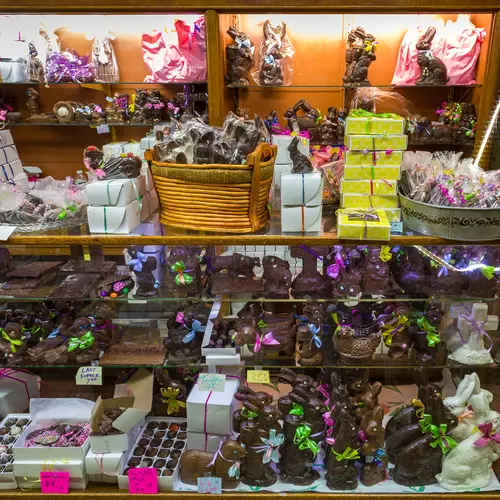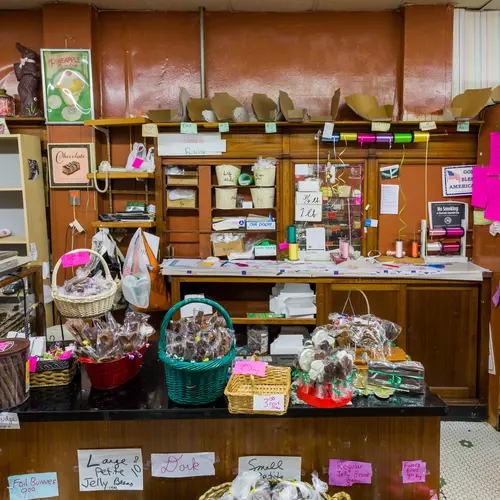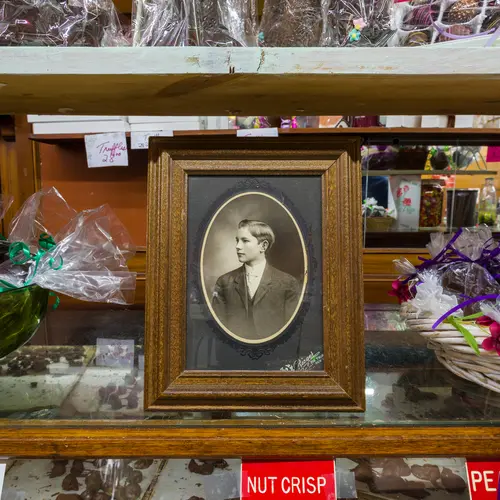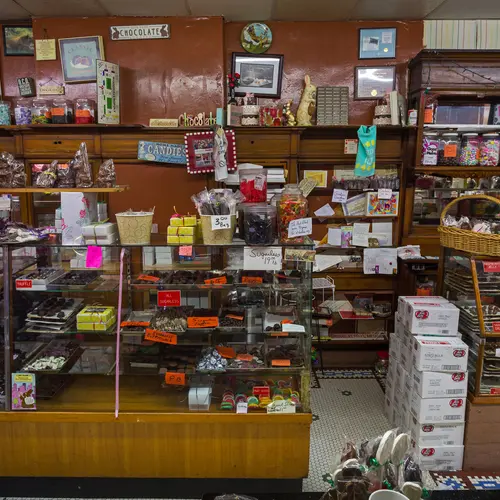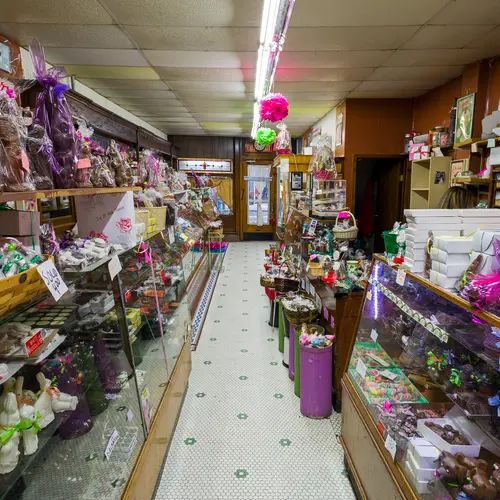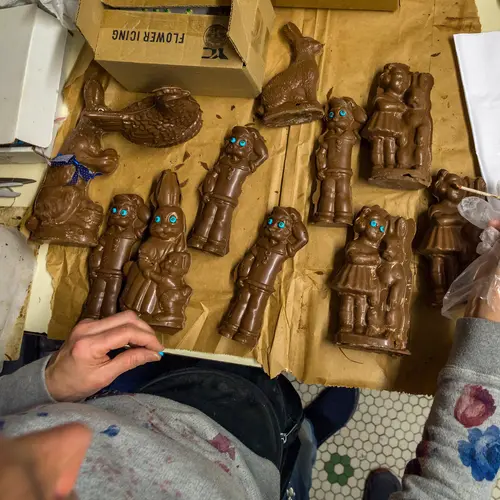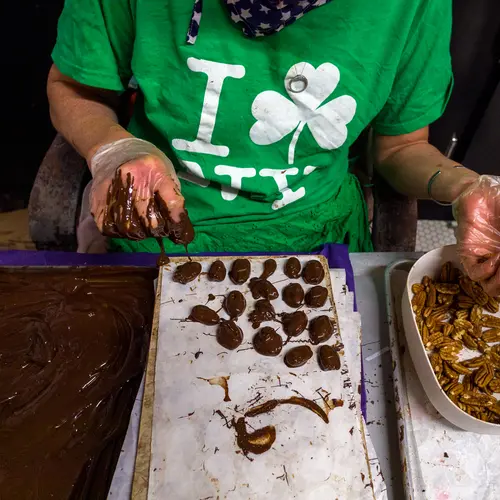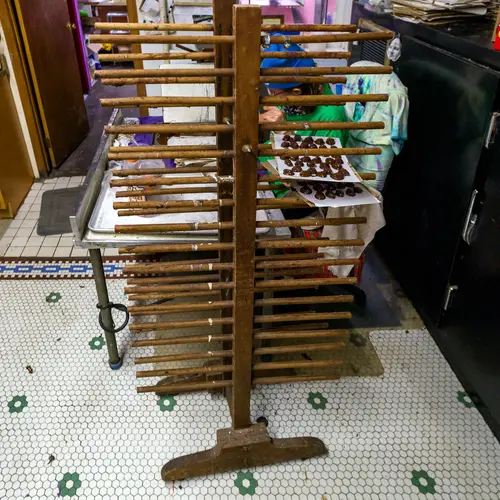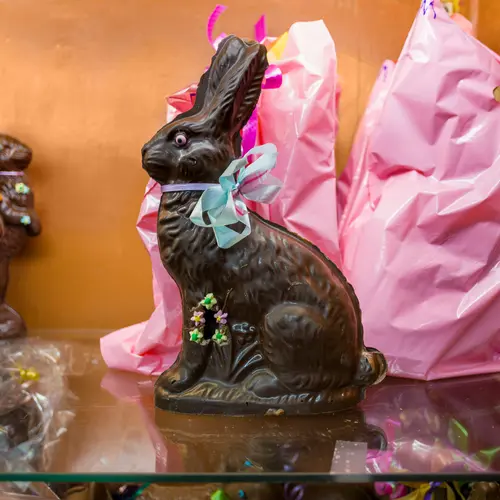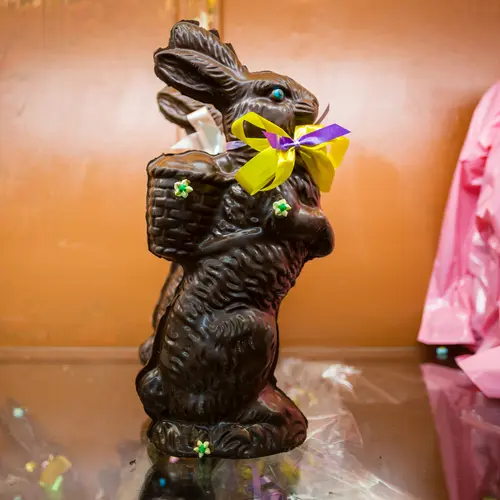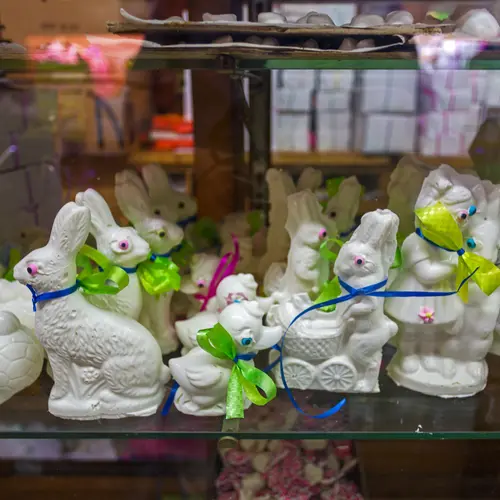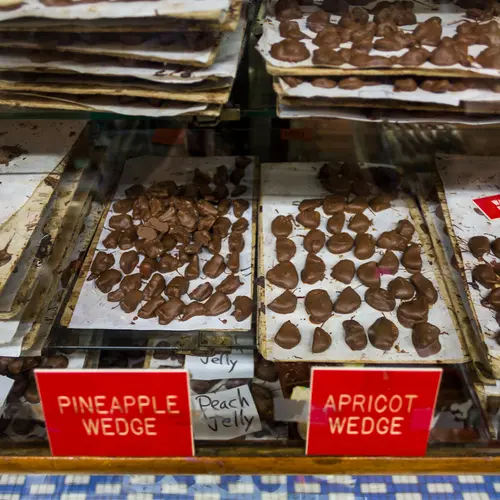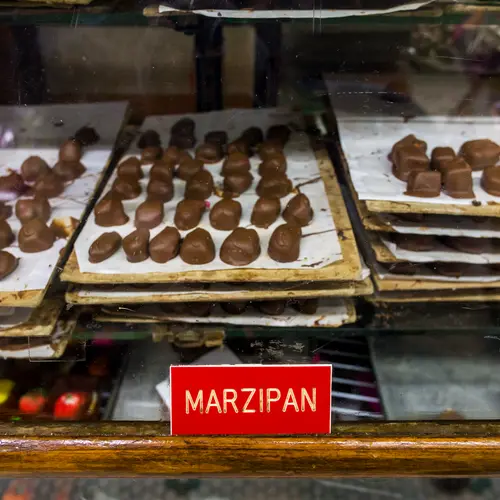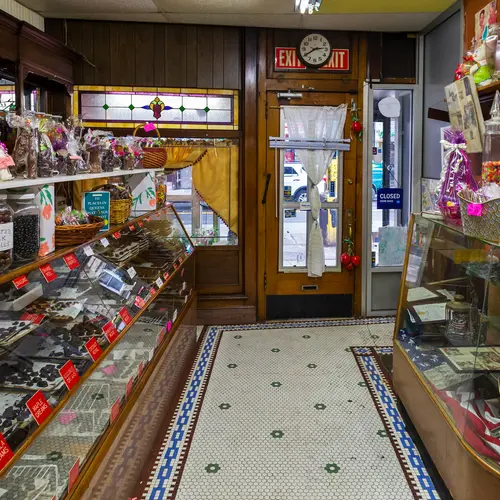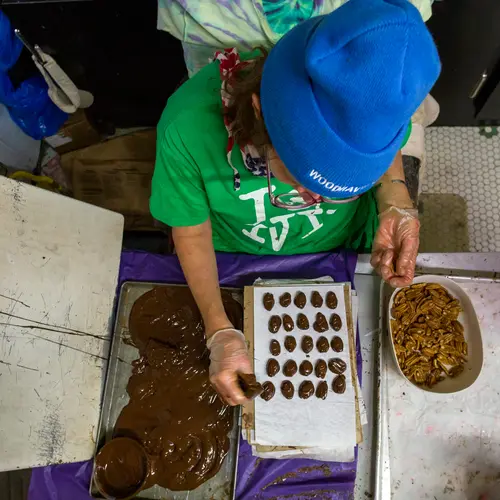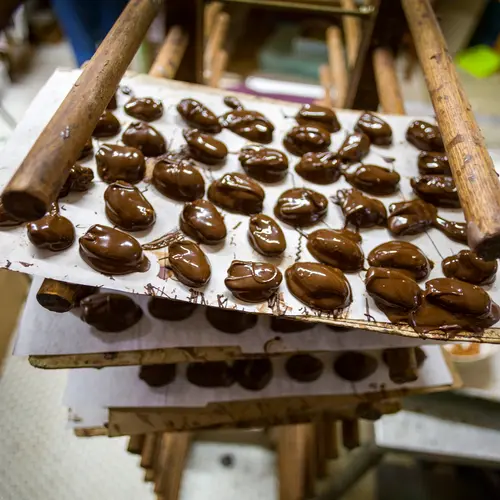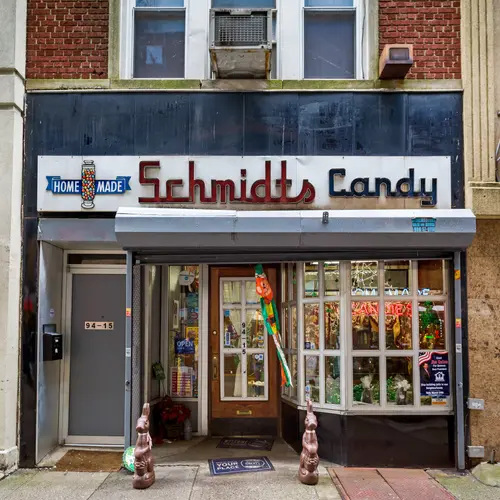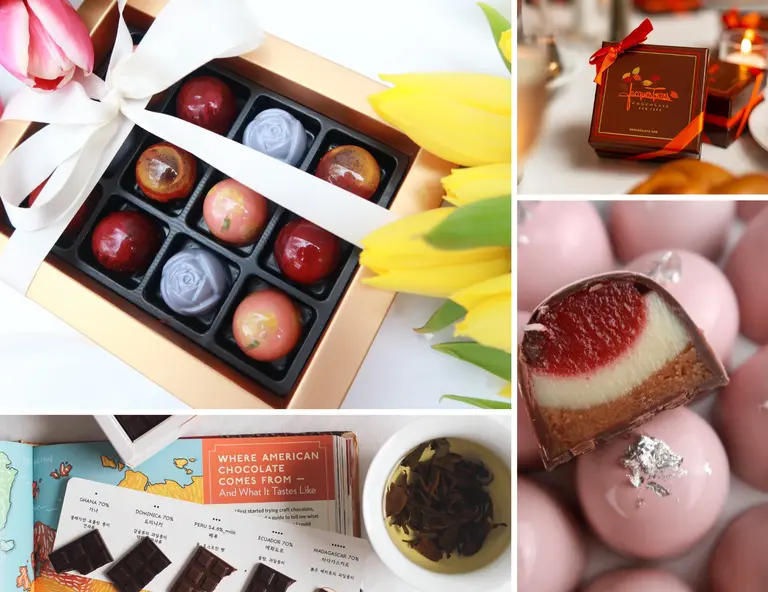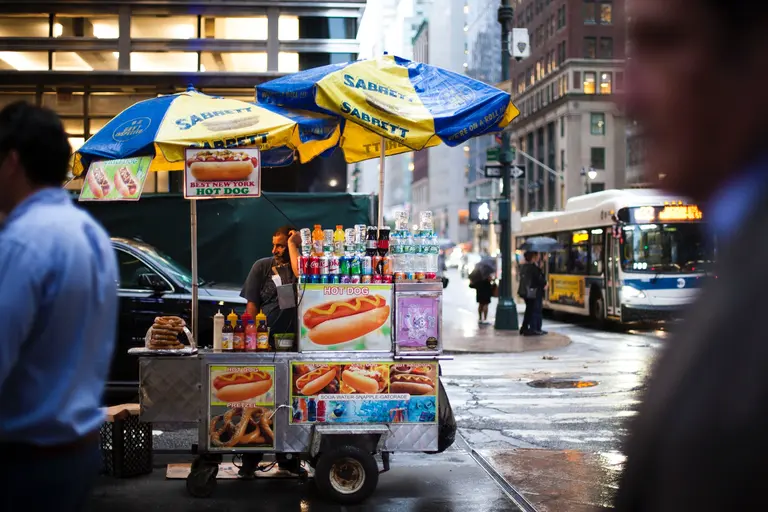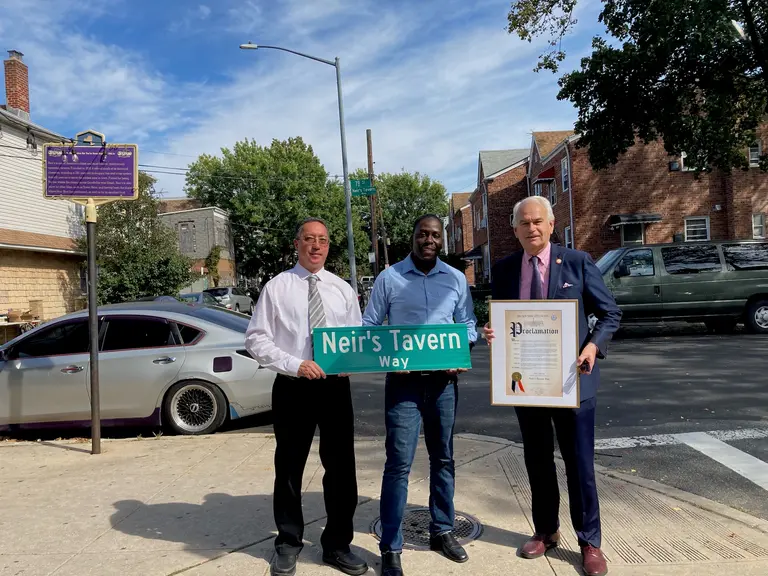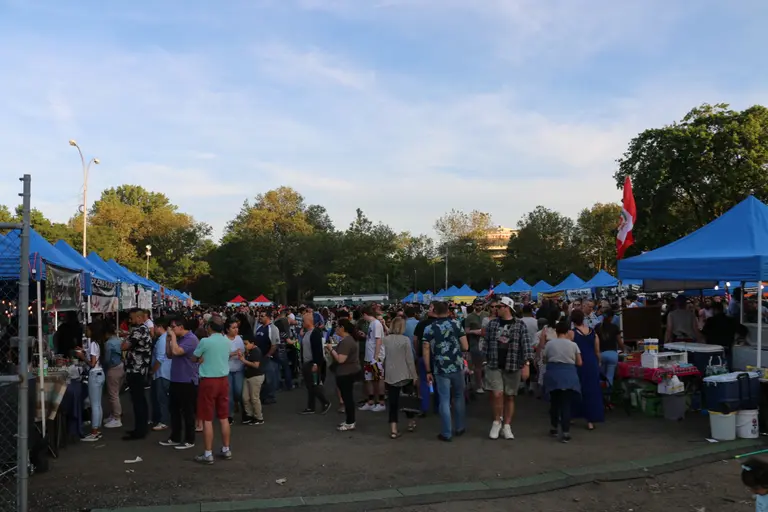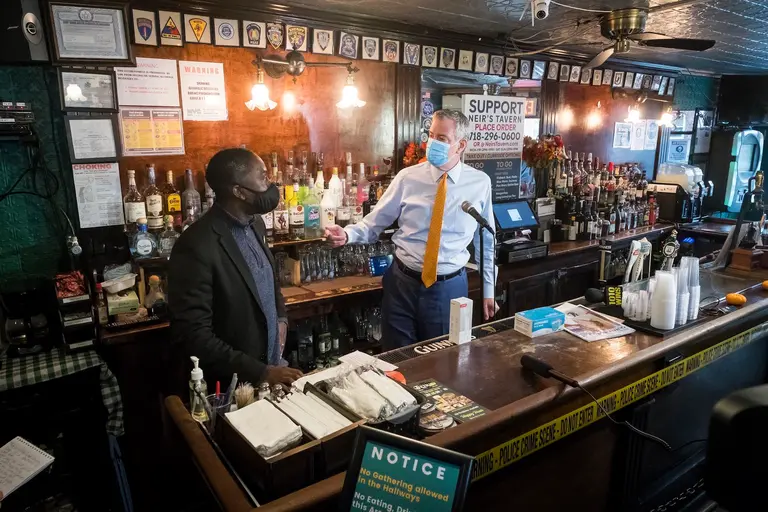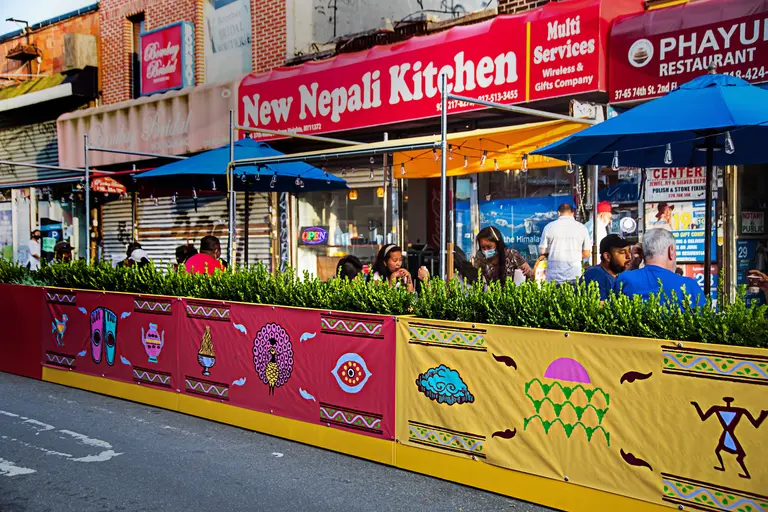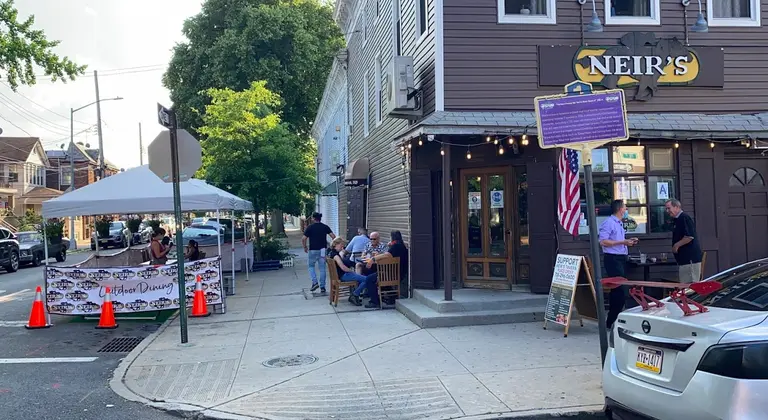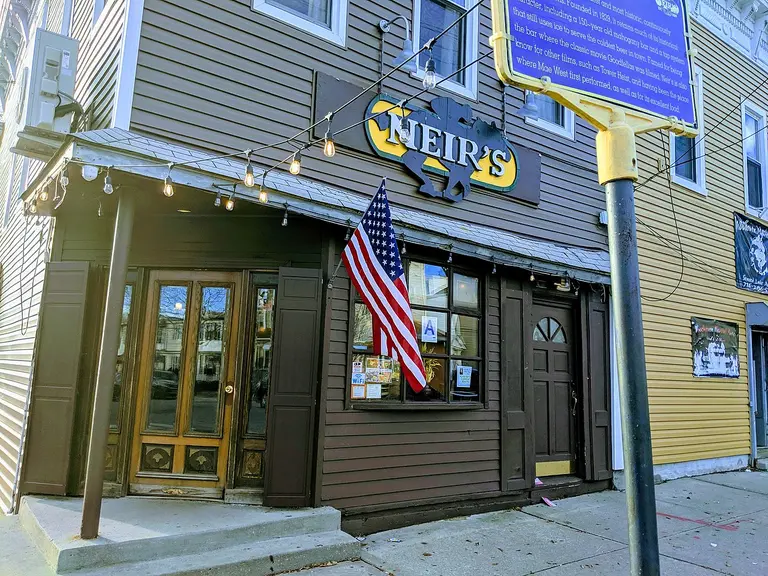Behind the scenes at 95-year-old Woodhaven chocolate maker Schmidt’s Candy
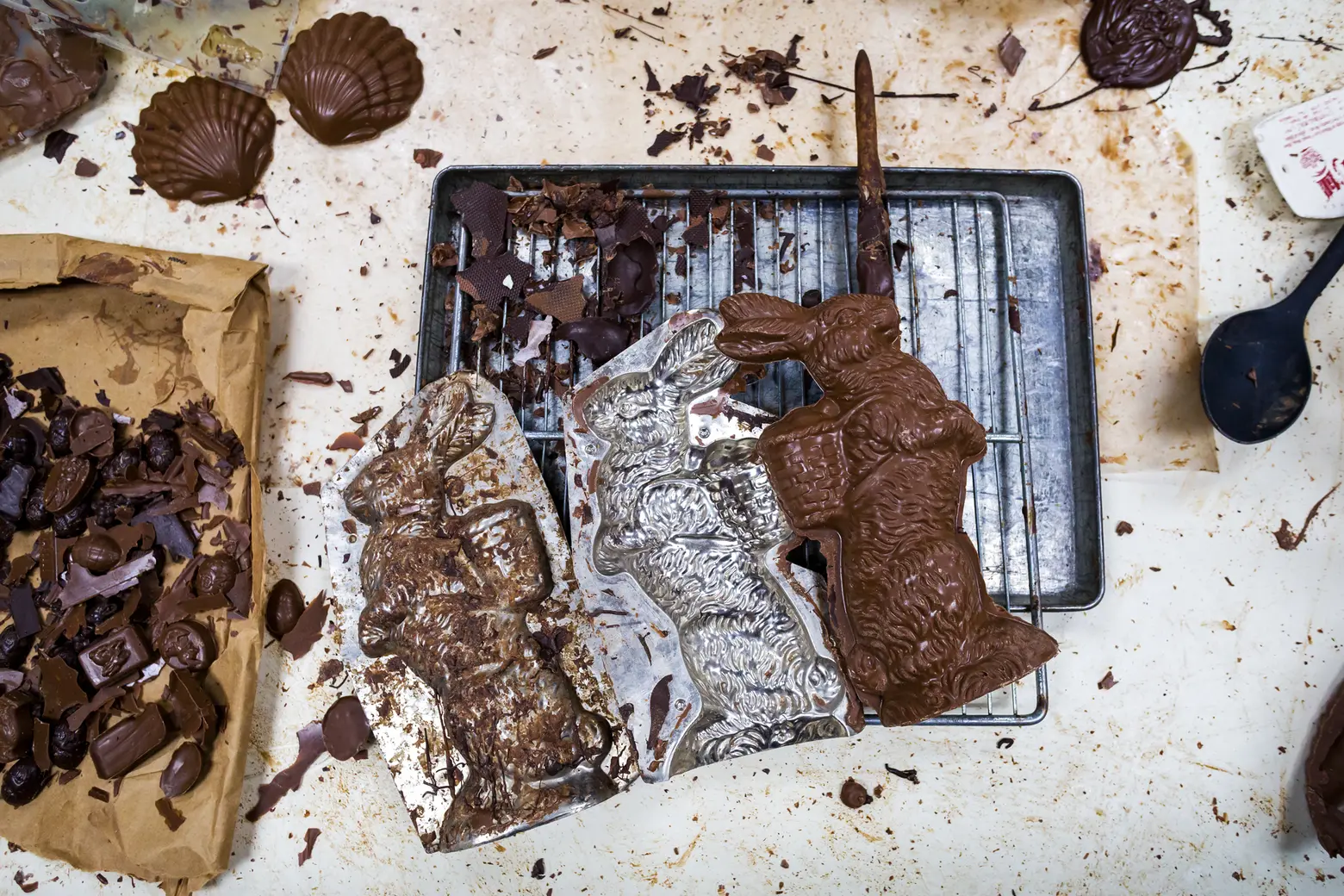
We may not be able to gather together for Easter this year, but we can certainly still place a chocolate order to lift our spirits. And if the Easter Bunny is choosing where to get the best homemade chocolates and candies to fill his basket, Schmidt’s Candy in Woodhaven, Queens would certainly be a top choice. German immigrant Frank Schmidt founded this nearly-century old confectionery shop in 1925. We recently had a chance to tour this iconic shop with Margie Schmidt, Frank’s granddaughter and the third-generation owner. Margie continues to make specialty holiday chocolates and candies by hand using the same recipes that were handed down to her by her father. Ahead, go behind the scenes to see how all these tasty treats are made, tour the historic interior, and learn about the shop’s history from Margie.
The following is transcribed from an interview with Margie:
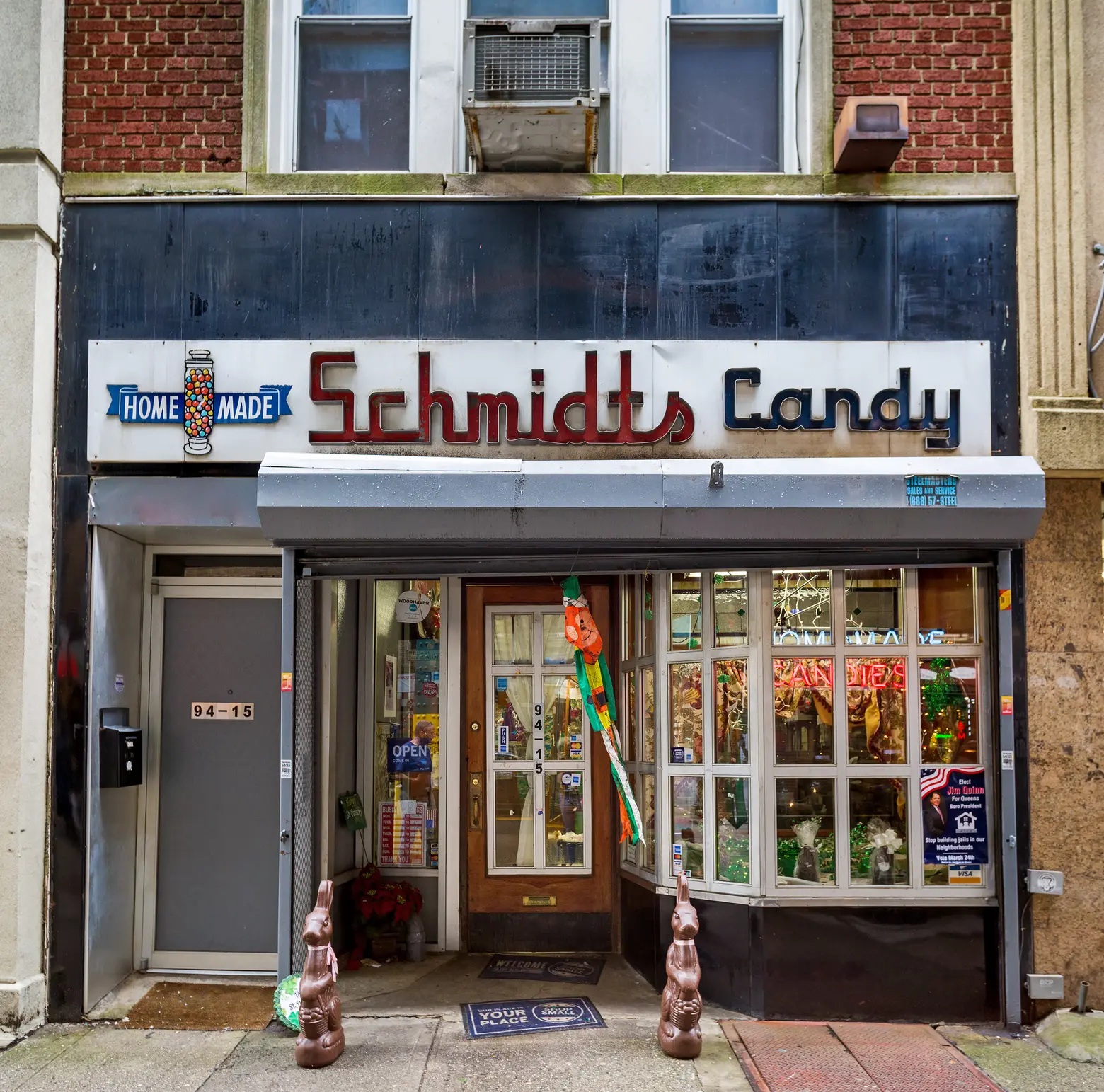
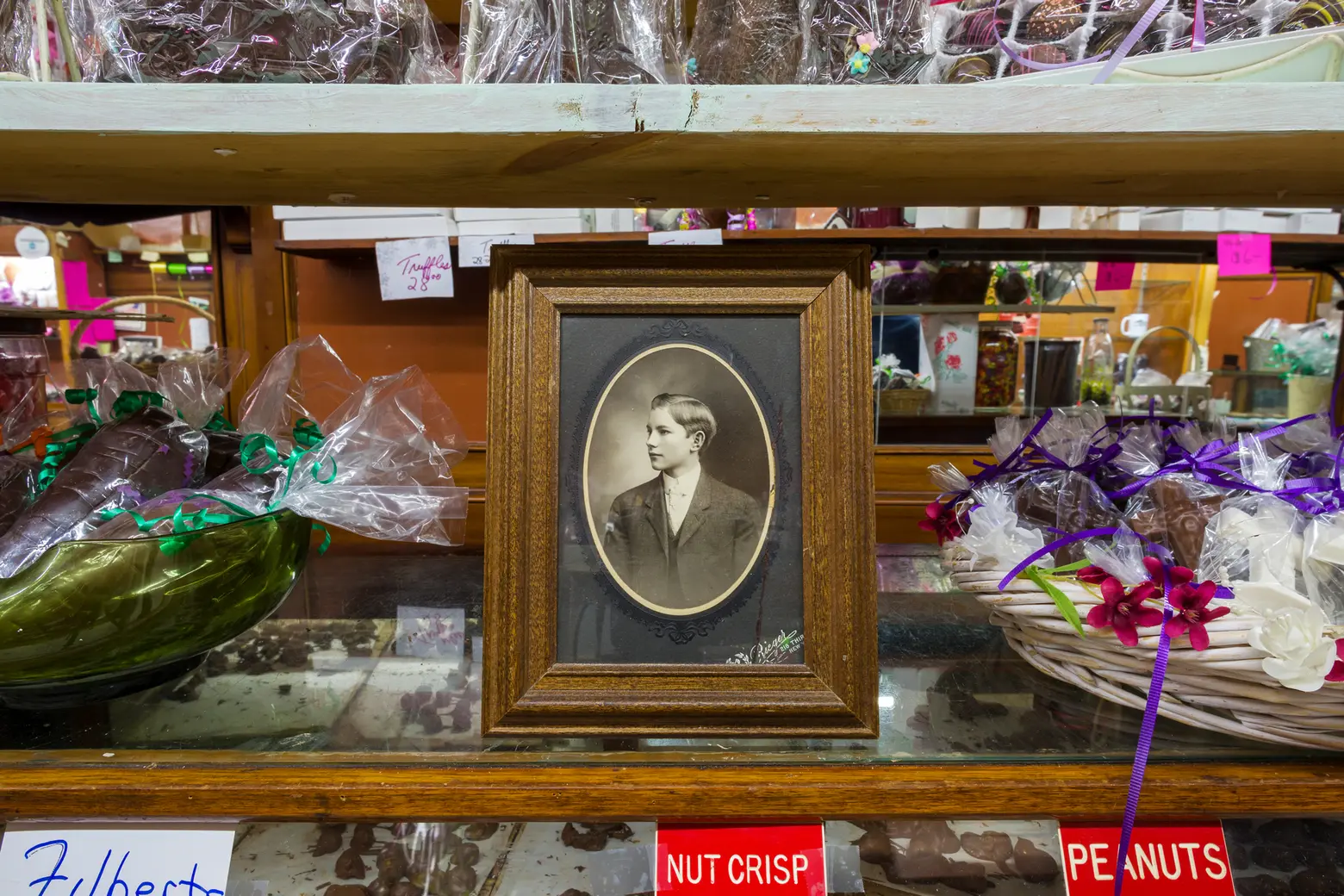
Top: the storefront; Bottom: a framed photo of Frank Schmidt
My grandfather’s story is a true immigrant success story because he also owned a car dealership in Queens Village and two houses but lost them all in the Great Depression. He managed to save this candy business because he bought the building in 1929 and lived upstairs from the shop. He raised all of his six children upstairs, including my father, who is also named Frank.
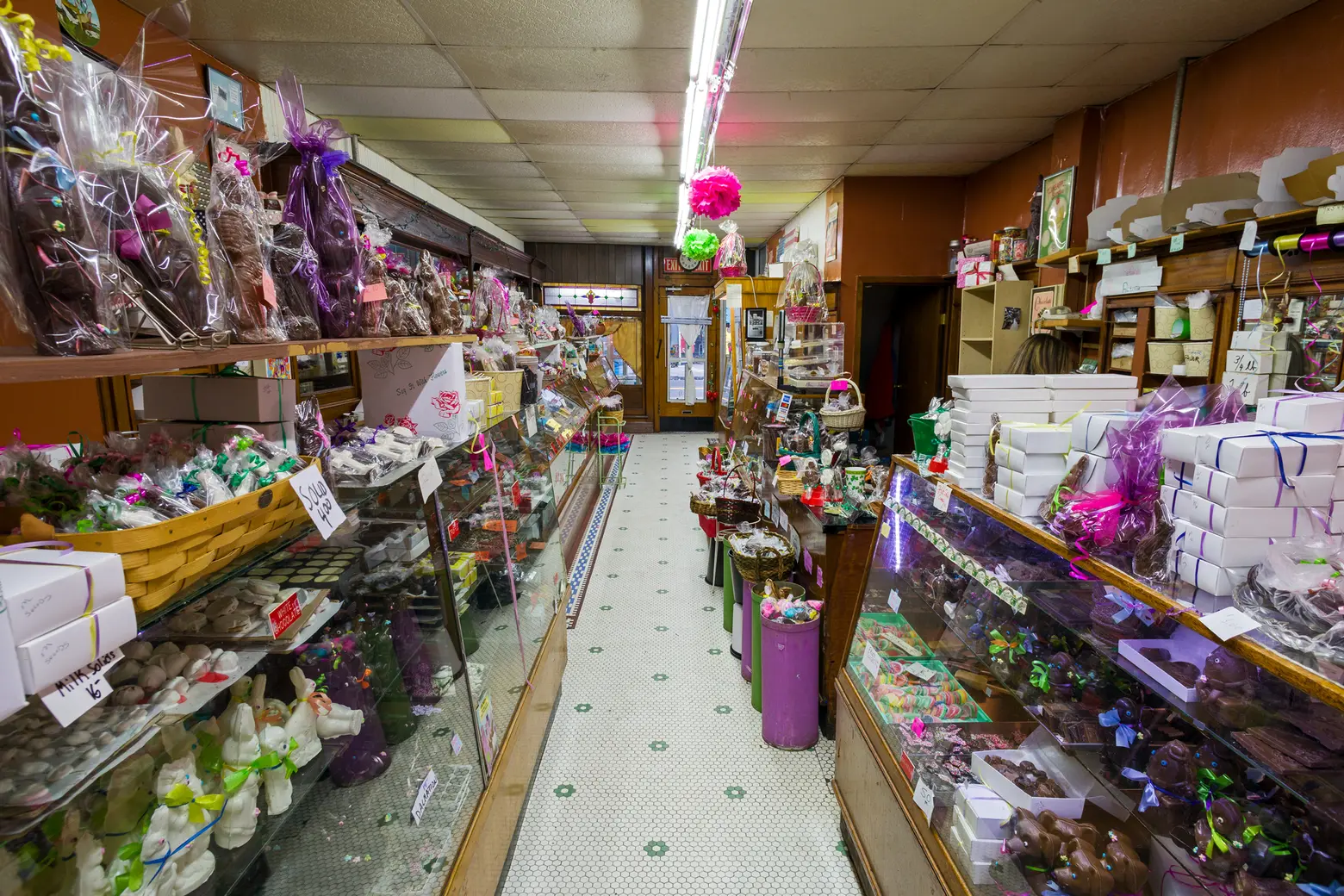
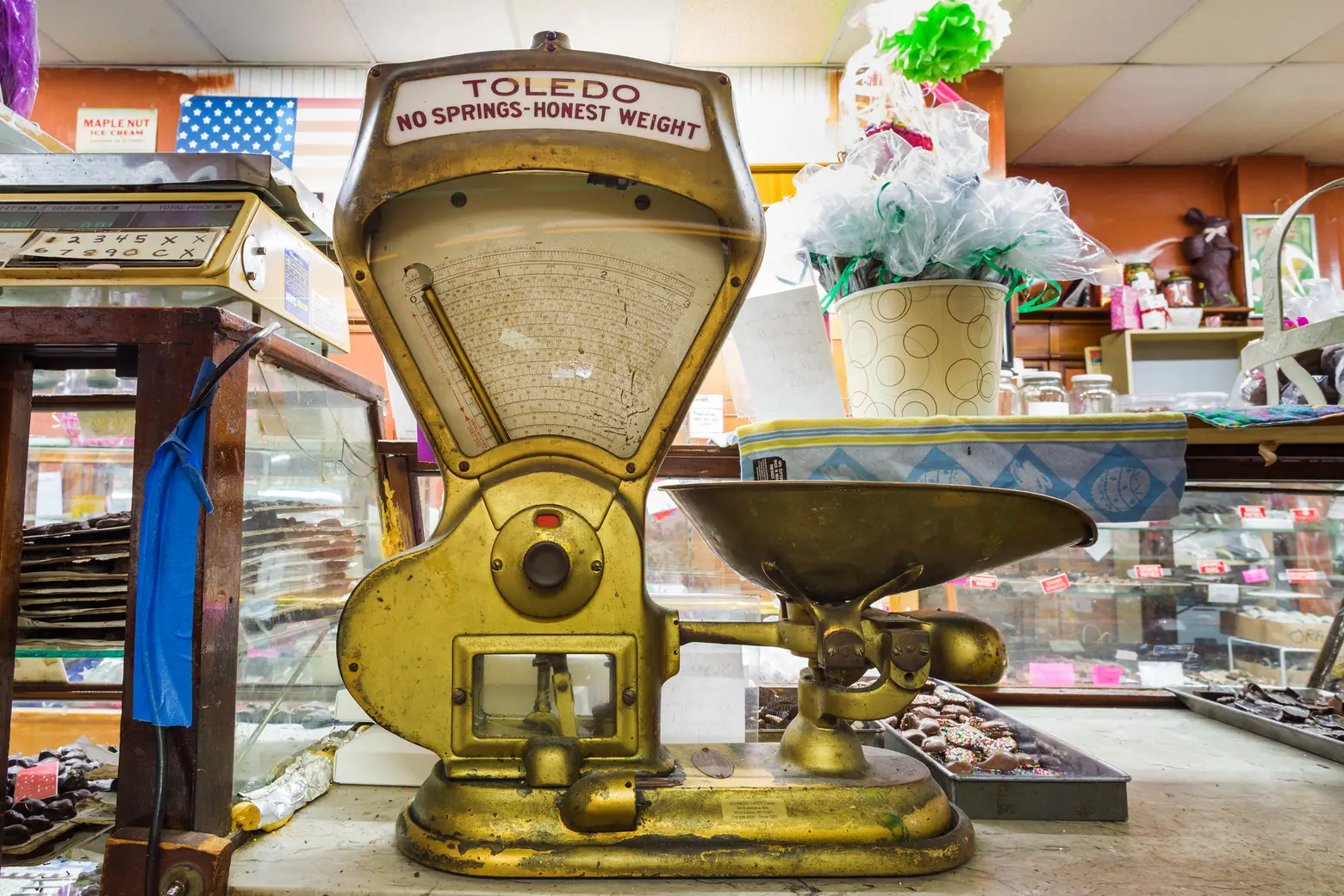
The scale is from 1925
Not much has changed over the years. Our antique glass and wood display cases, candy jars, and tile floor are all original, and I still make all the chocolate by hand just like Grandpa did, using our same German family recipes.
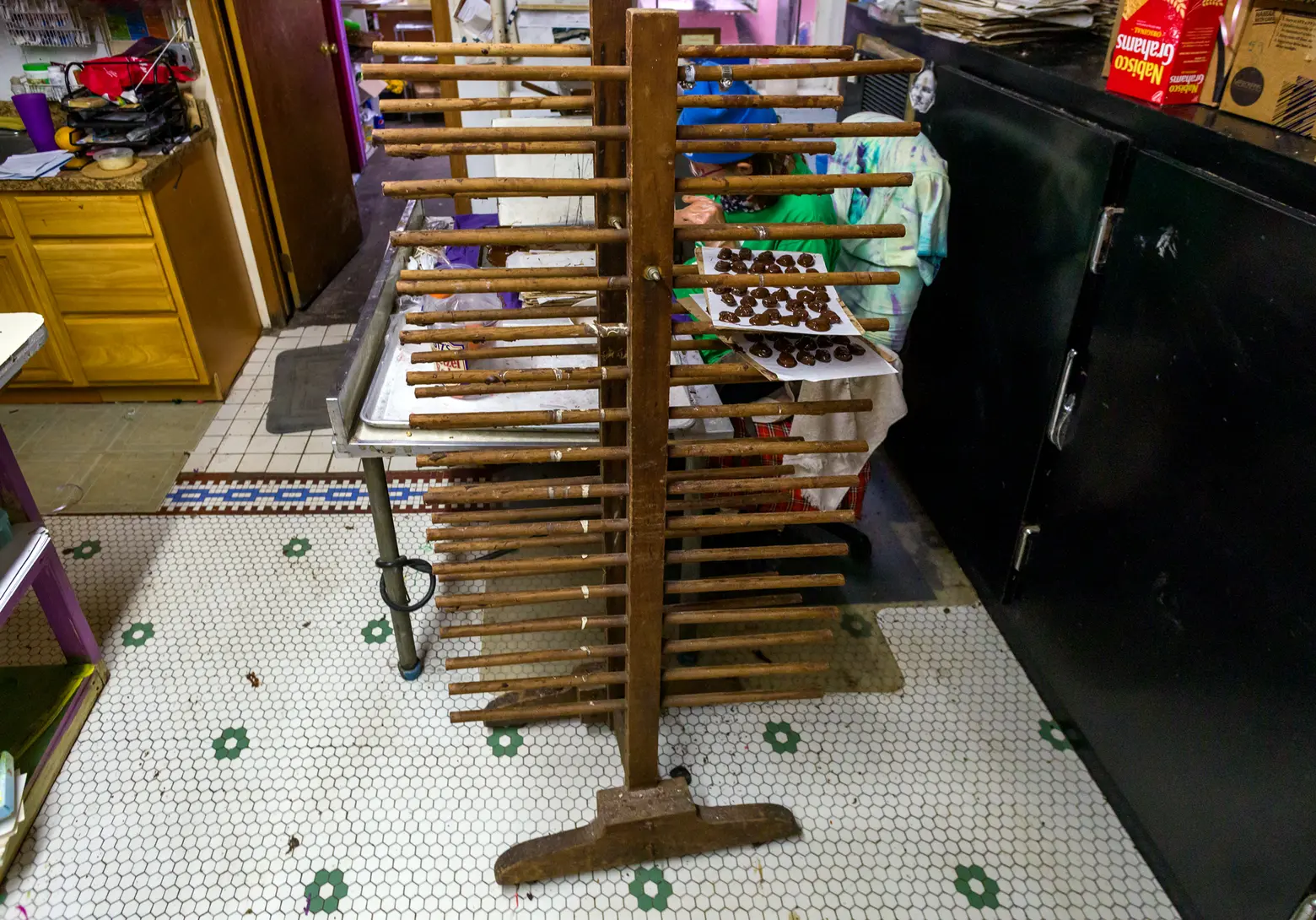
I even use the same wooden drying racks as my grandfather did 95 years ago and the same key to this store that my father handed down to me.
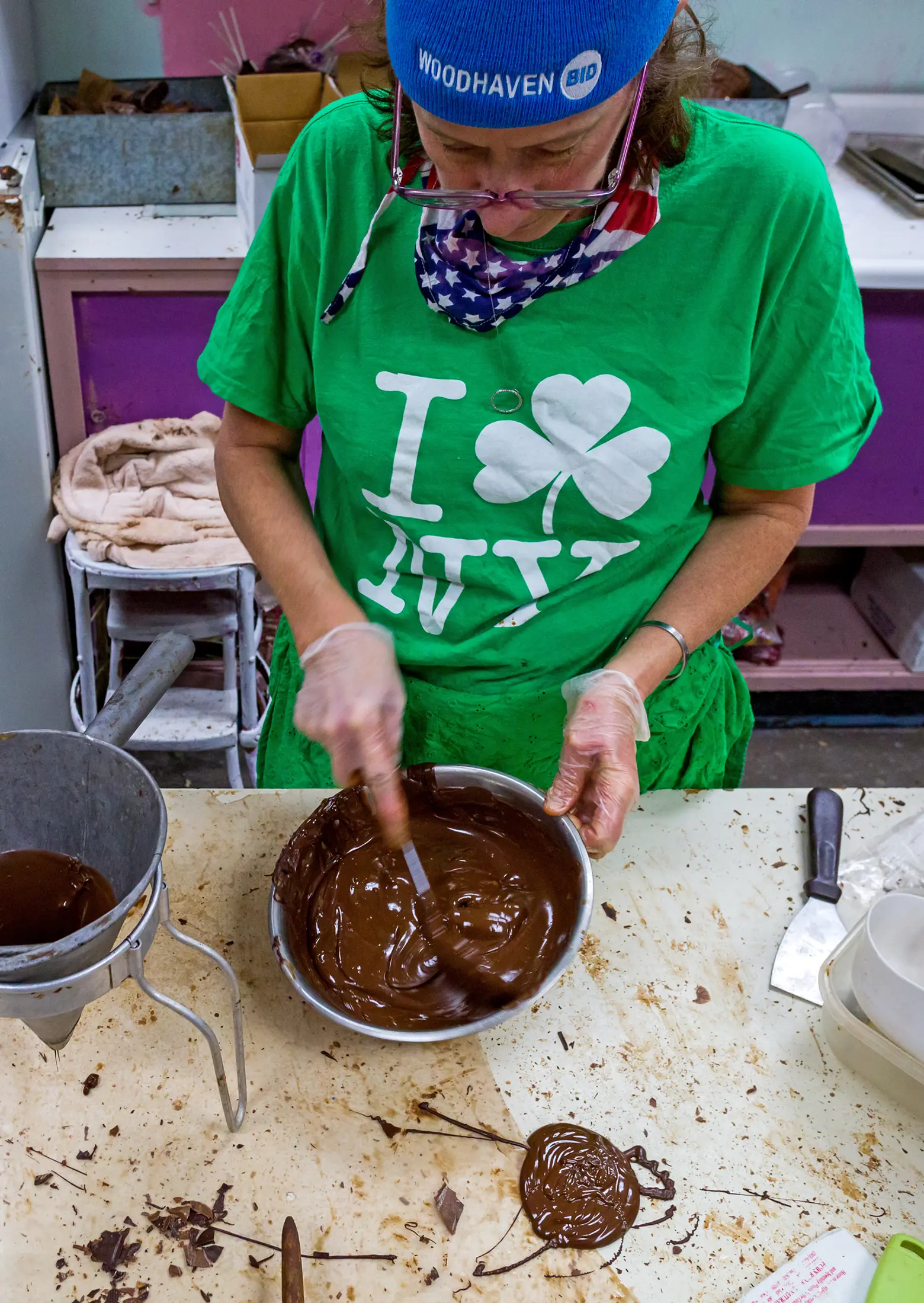
Margie is still stirring chocolate today
I started working here as a kid, stirring the chocolate and cutting caramels and slowly learned everything about the business.
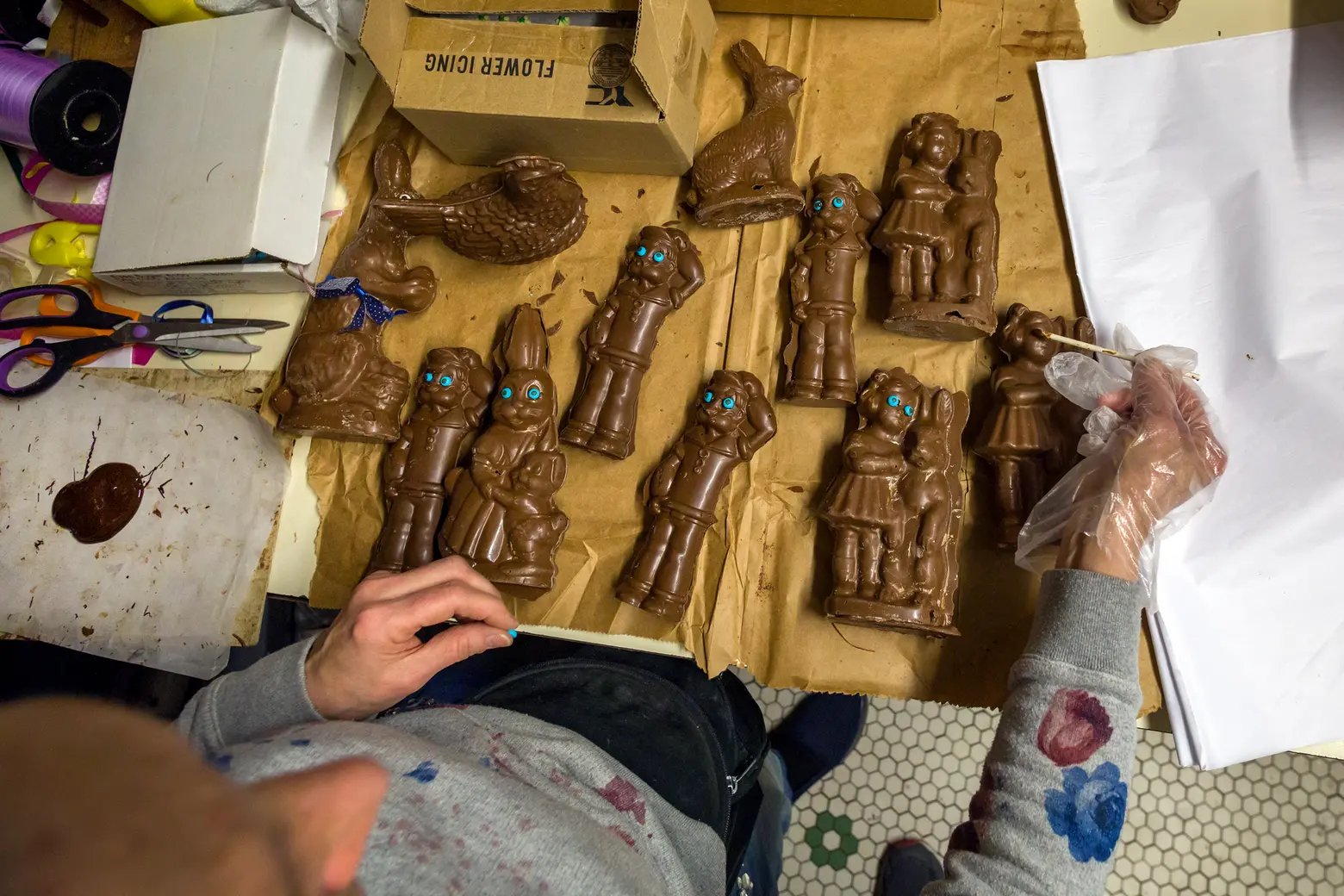
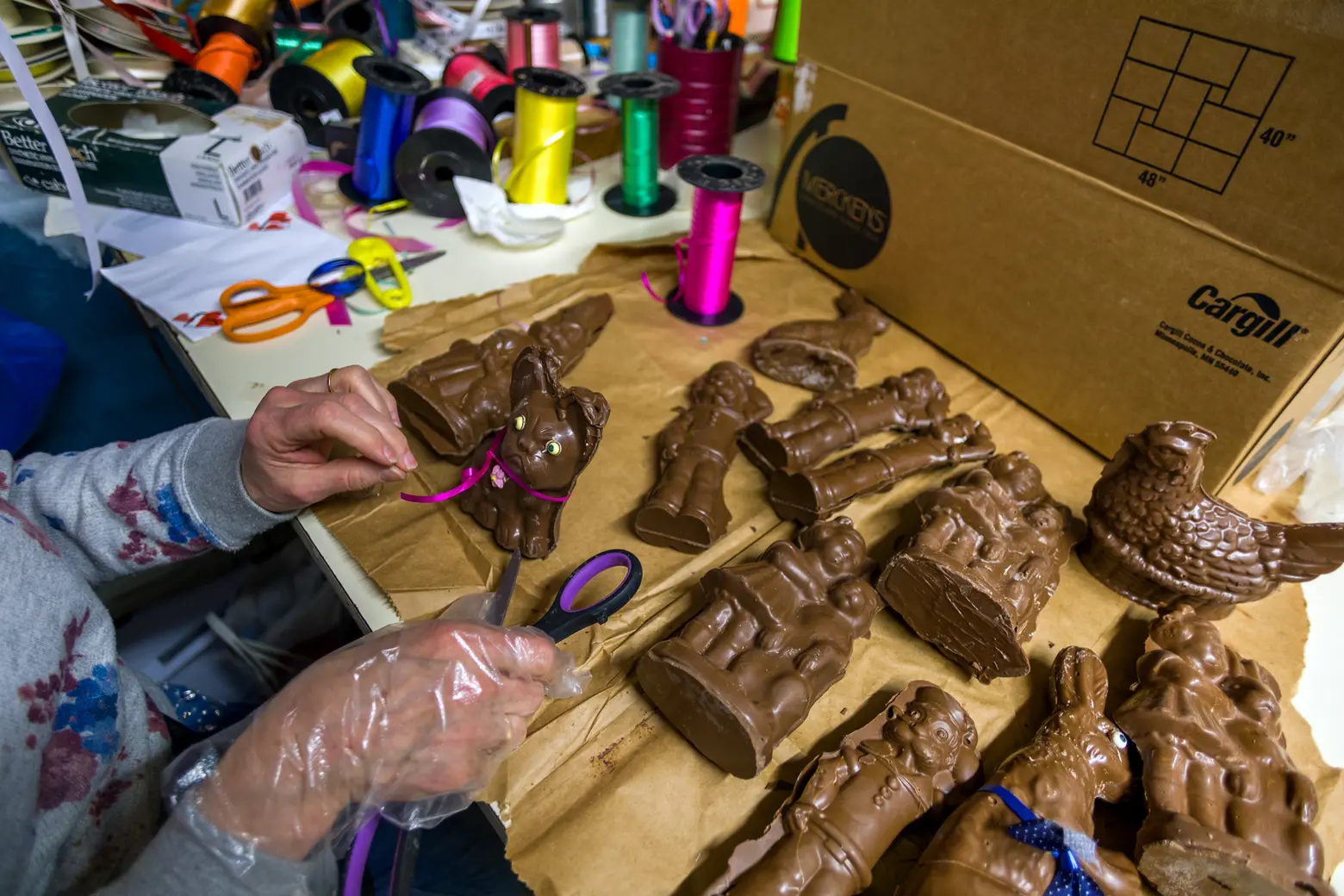
Here, Margie gets some help with decorating and wrapping
I took over entirely in the 1980s, and I’m the only grandchild left in the business. The store is now a one-man show as far as production, although I do have helpers during the busy season answering the phone as well as decorating, wrapping, and boxing chocolates.
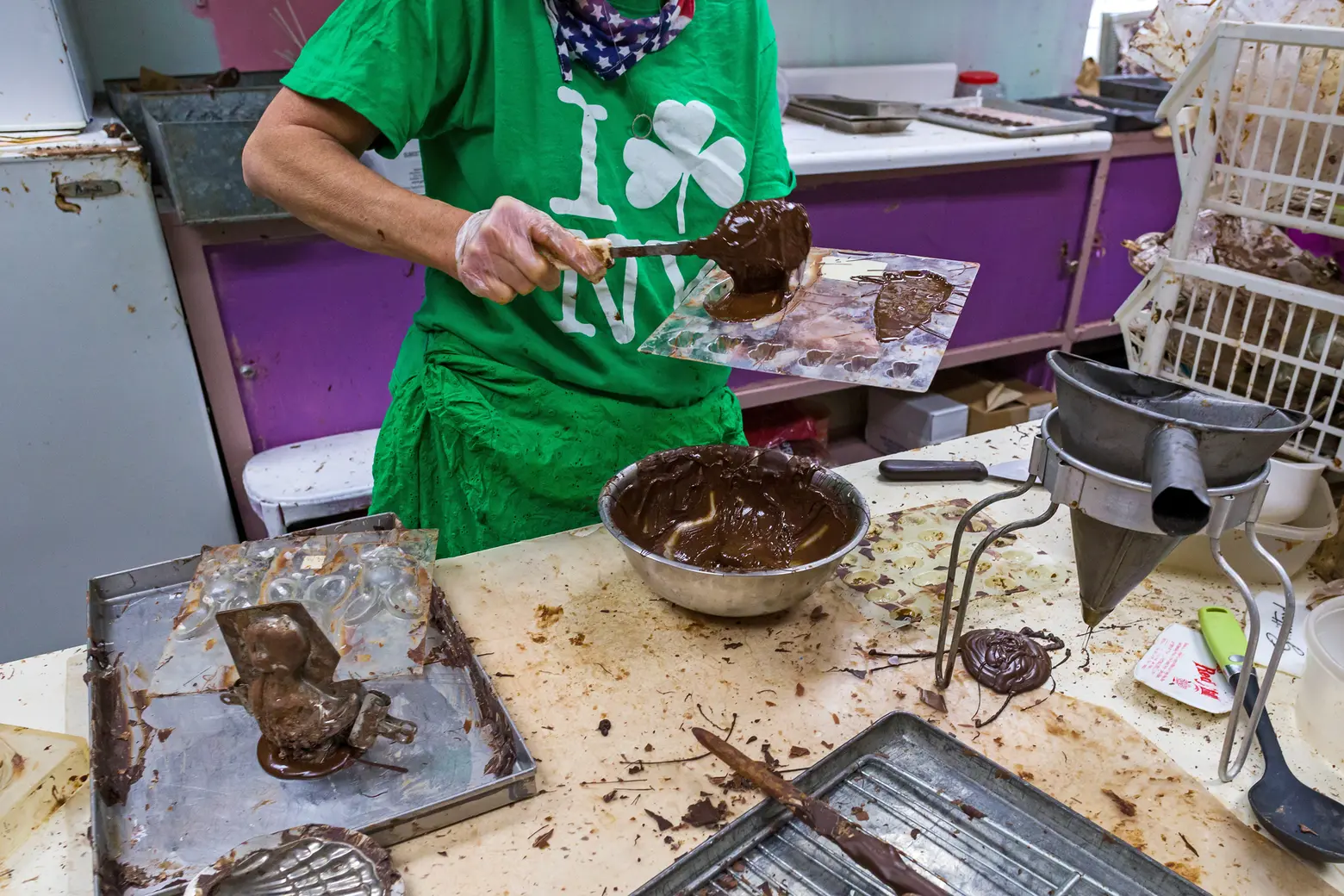
For the most part, I make almost all of the candy that is sold here by hand. I have six main ingredients downstairs (sugar, cream, corn syrup, milk, gelatin, fondant), and if I can’t make a certain candy with those ingredients and a spigot of water, then I don’t make it.
I melt all the chocolate in a large copper kettle that my grandfather used and make the ribbon candy and buttercrunch using the same marble-topped tables. Nothing in the store is perfect or uniform looking in size or shape because it is handmade, not machine-made into a pre-determined form.
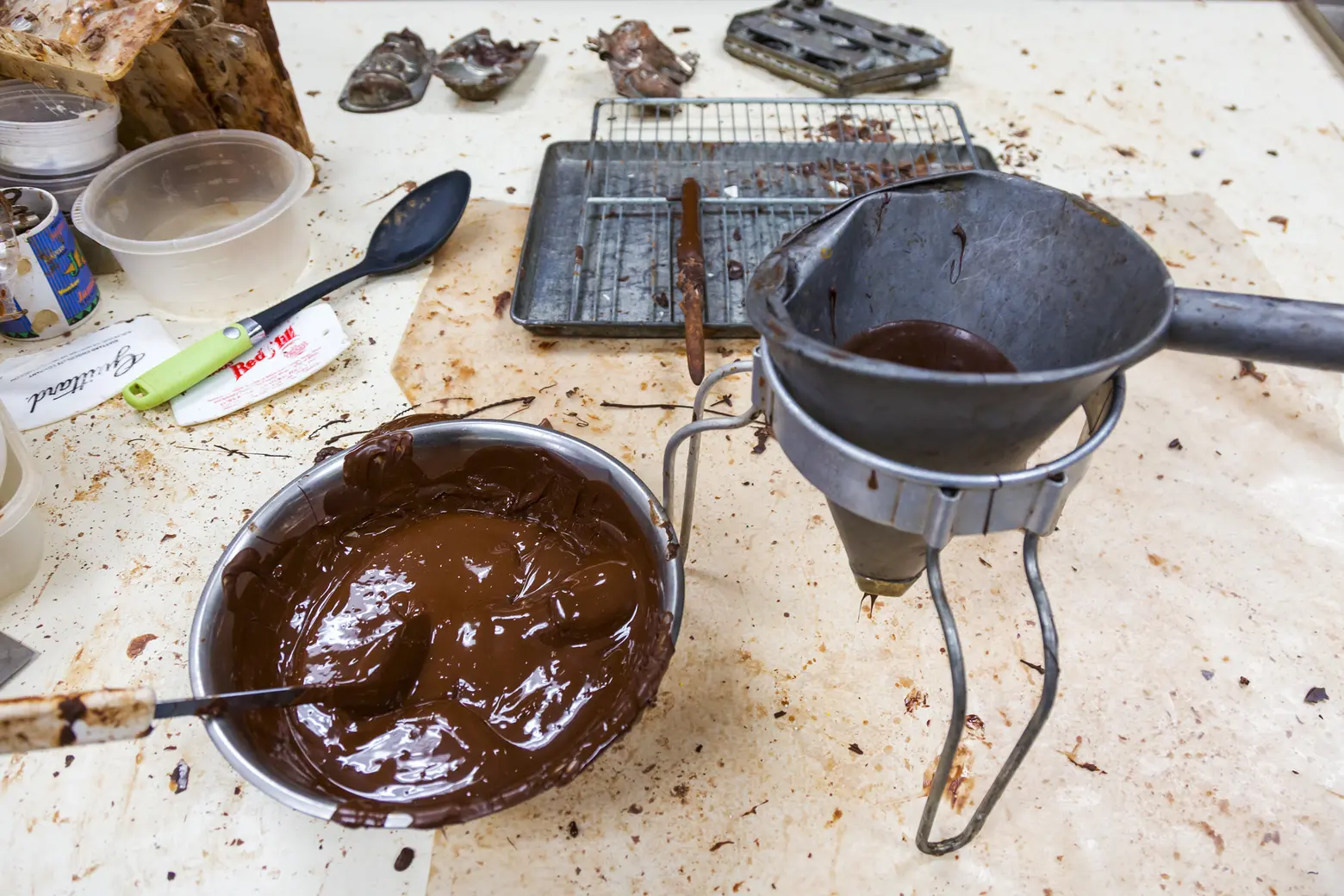
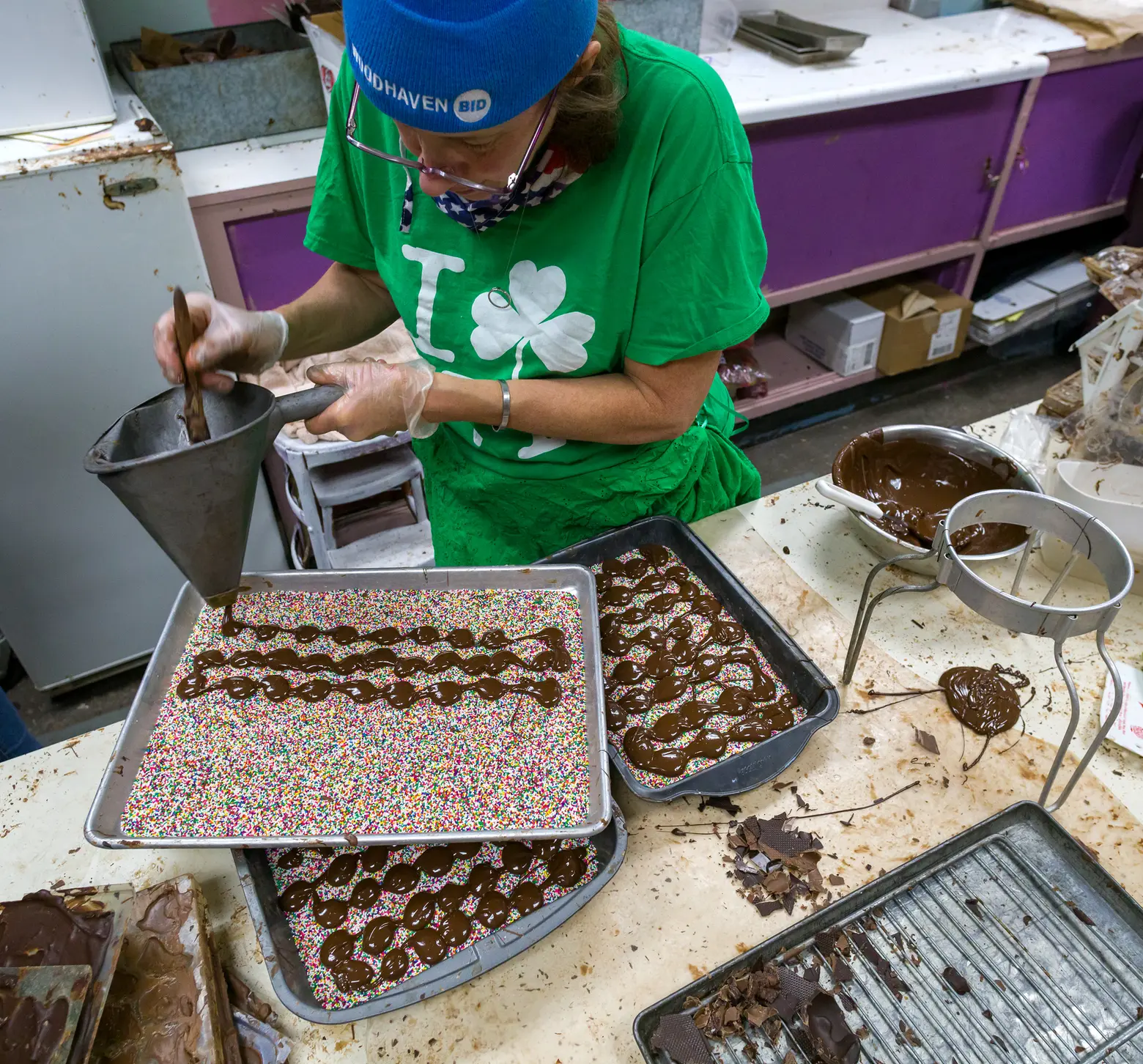
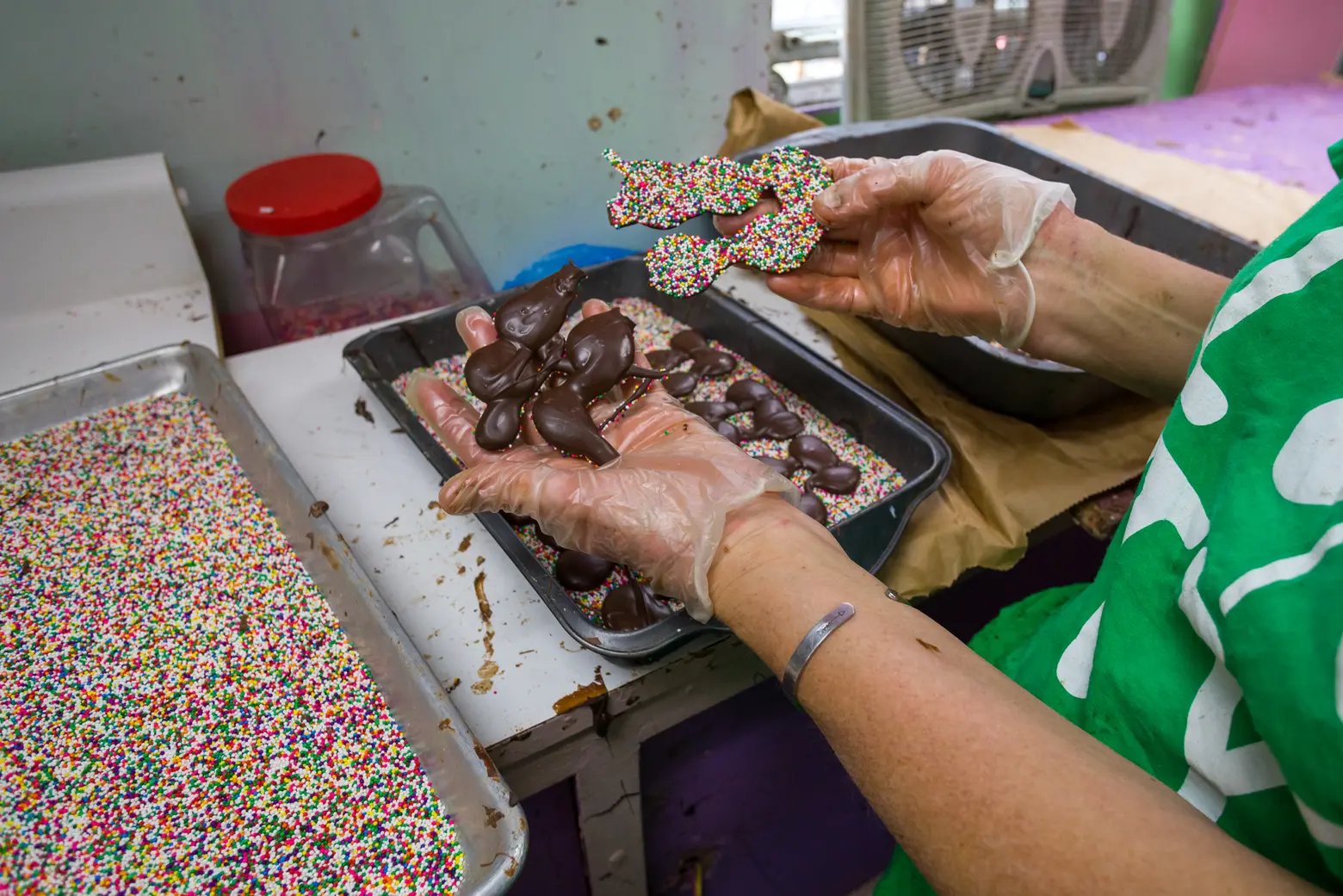
Margie making nonpareils
If you look at the chocolate nonpareils that I made today, you can see they are all slightly different in shape, and the size varies. When I started pouring the melted chocolate through my funnel, the opening was wide, but as I filled tray after tray, the funnel opening got smaller and smaller as the chocolate hardened inside of it, hence the smaller size. During the busy season, I can make 2,000 to 3,000 nonpareils a day.
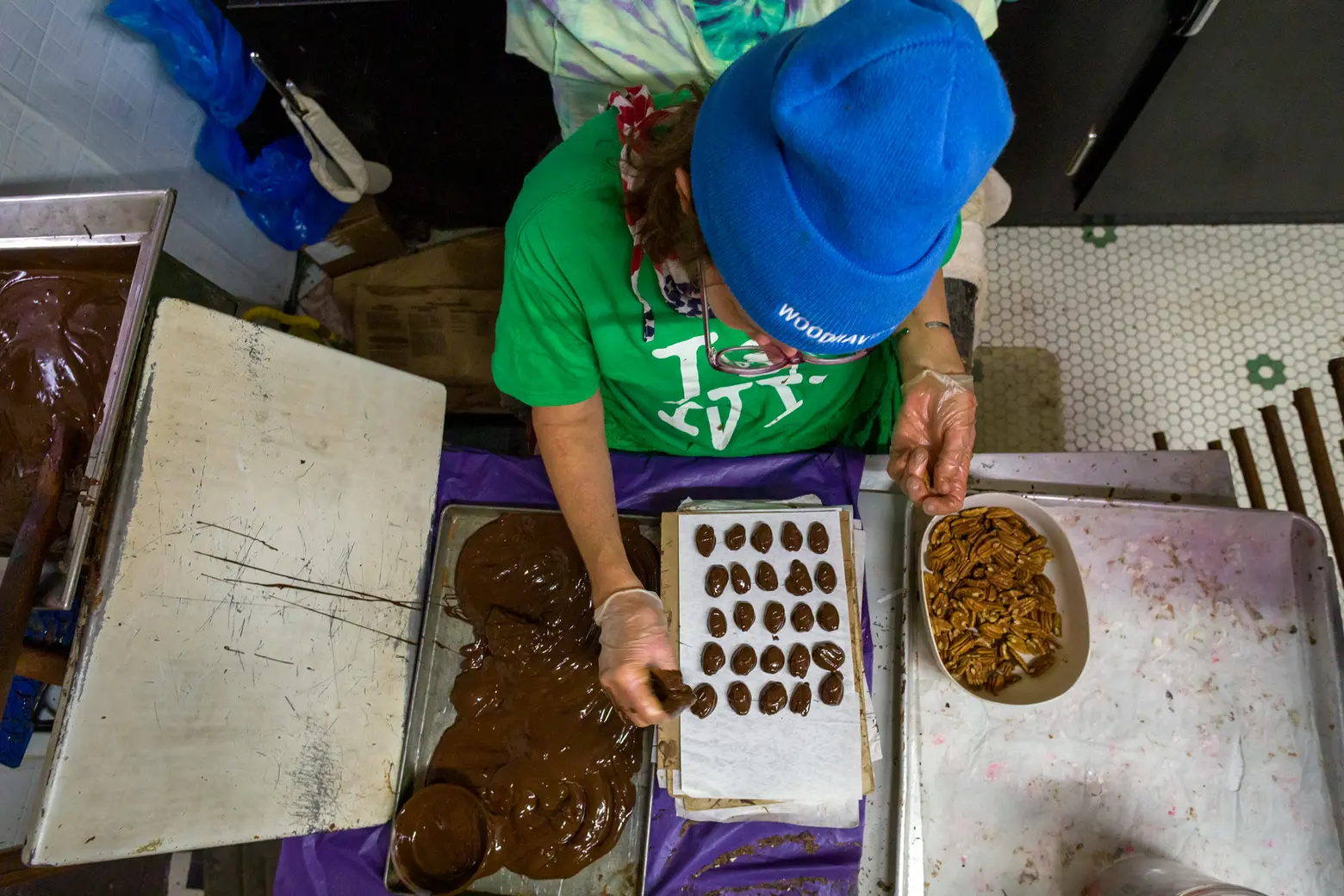
Margie making pecan delights
The chocolate-covered pecan delights I made today also vary in size and shape, and I make thousands of pieces in one day. Every piece of chocolate goes through these 10 fingers one at a time, and that is why I work 16-hour days during the holiday seasons of Christmas and Easter. It is probably pushing 200,000 times that I bring a piece of candy through my hands.
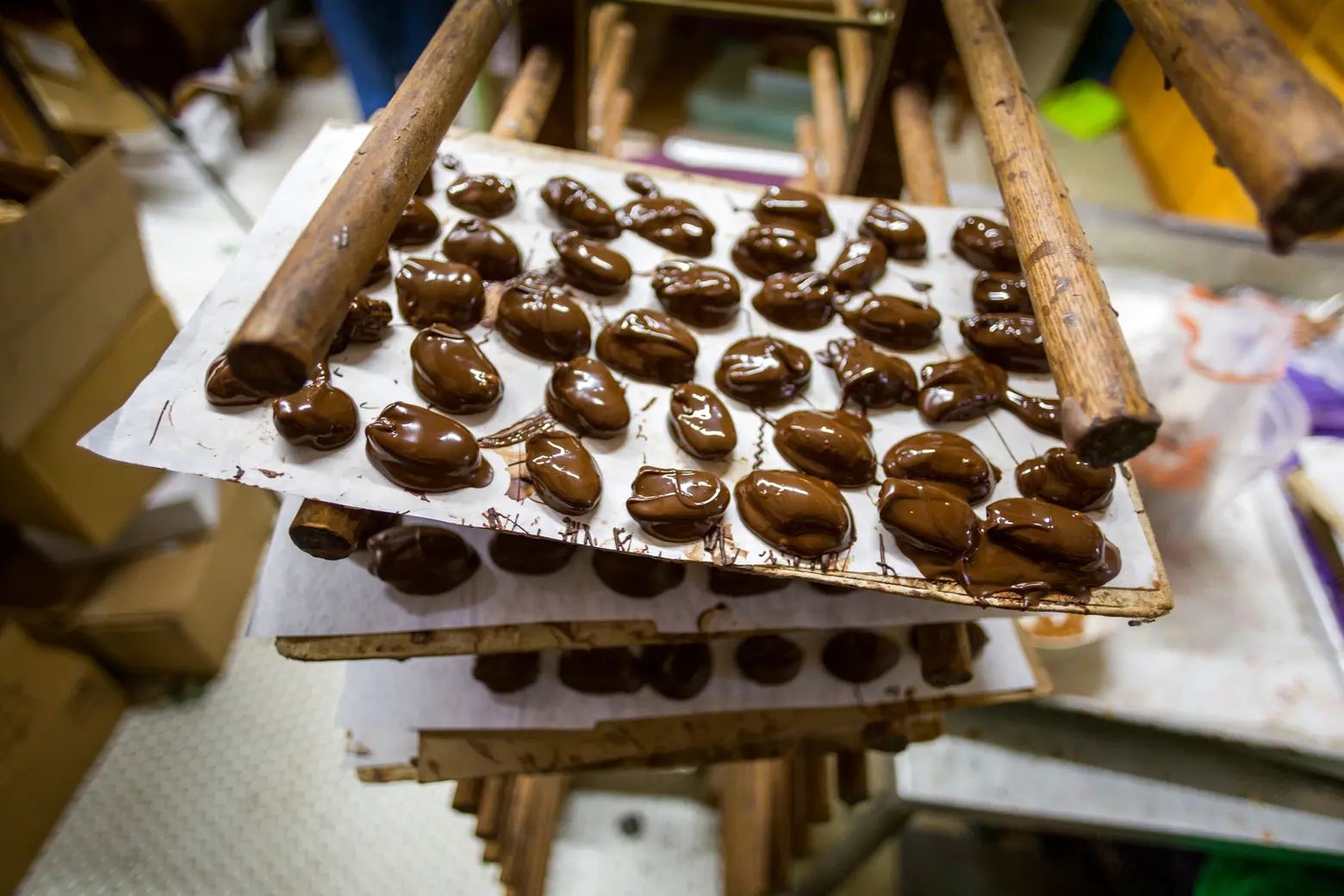
If you look carefully, you can also see that I add a finishing stroke to the top of every chocolate-covered pecan in the form of a letter P. That way, everybody can identify them as pecan delights. They are not all uniform and lined up like soldiers, but most people say that they don’t care, they just want my candy, and to me, that is the highest compliment.
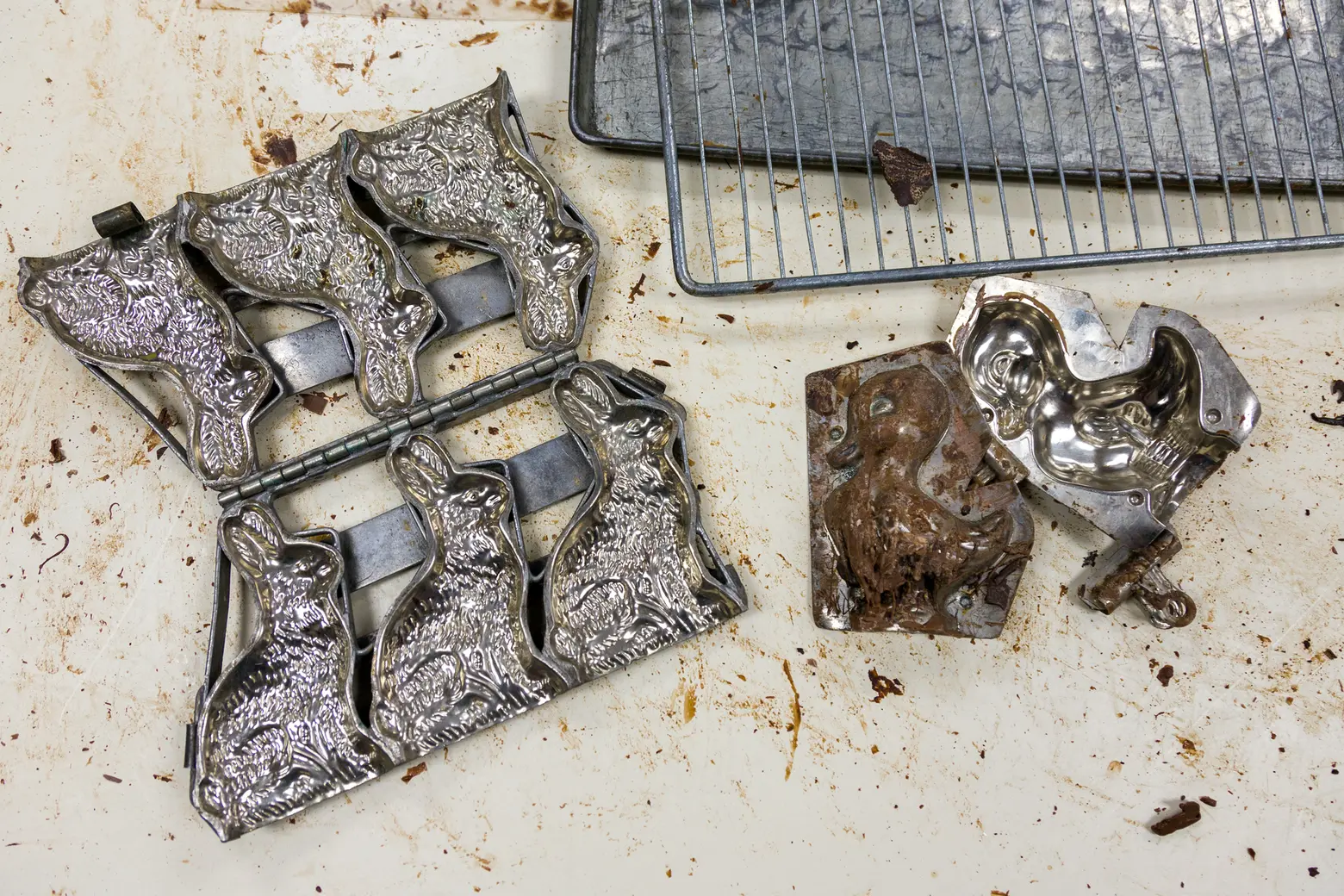
The cast-iron molds that I use to make our seasonal chocolates and custom favors and figures are very intricate and were purchased in the 1920s and 1930s. I am sure they don’t make these kinds of quality metal molds anymore. At first, my father would only let me clip and unclip the molds that we use to make all the chocolate bunnies, eggs, cupie dolls, wreaths, and other holiday shapes, but eventually, he trusted me with every part of the process.
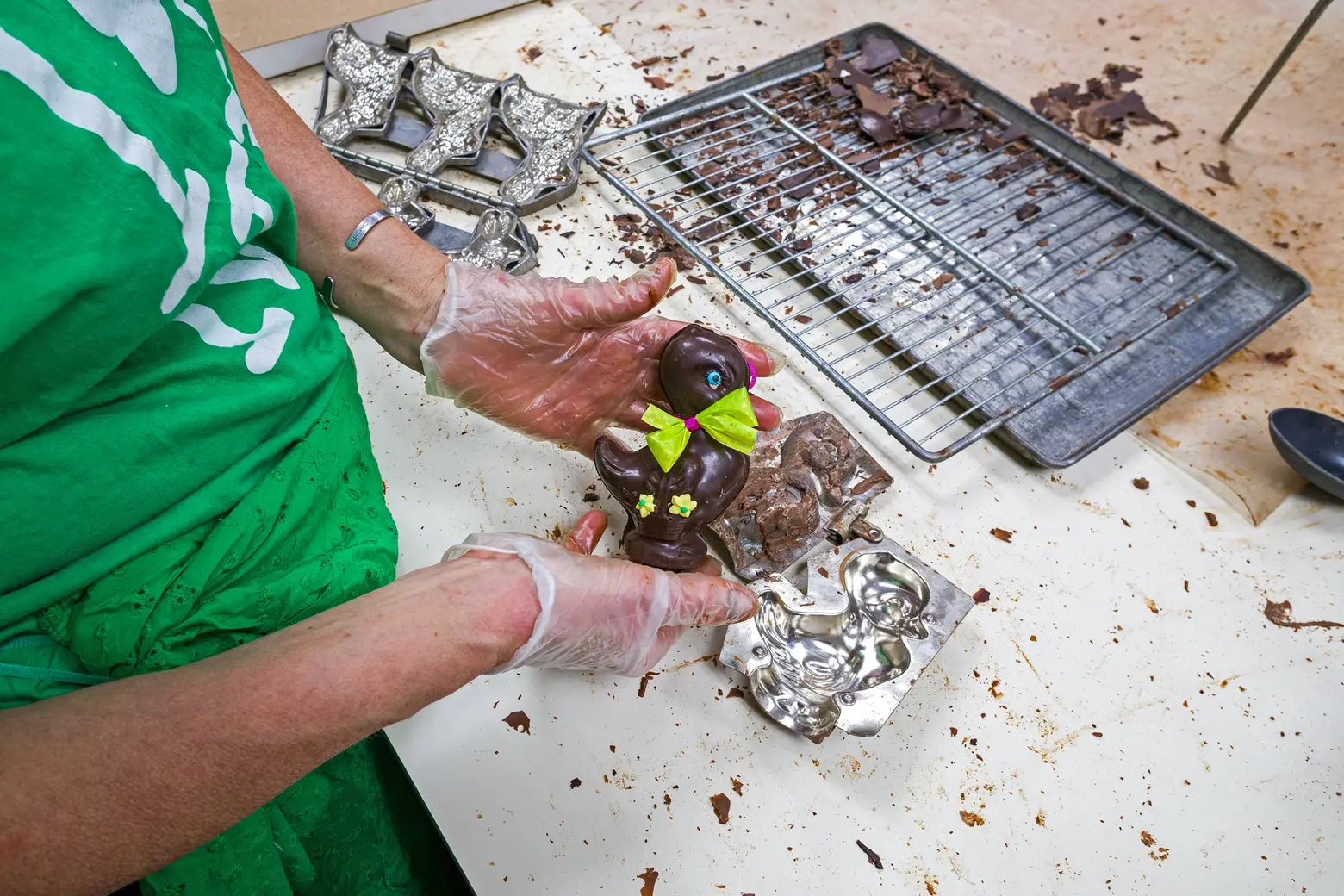
My all-time favorite cast iron mold for chocolate is a little chick which I use every spring for Easter. It has such beautiful details and unlike many of my older molds, the chocolate comes out perfectly almost every time I use it [with very few] bubbles or imperfections showing in the chocolate chick.
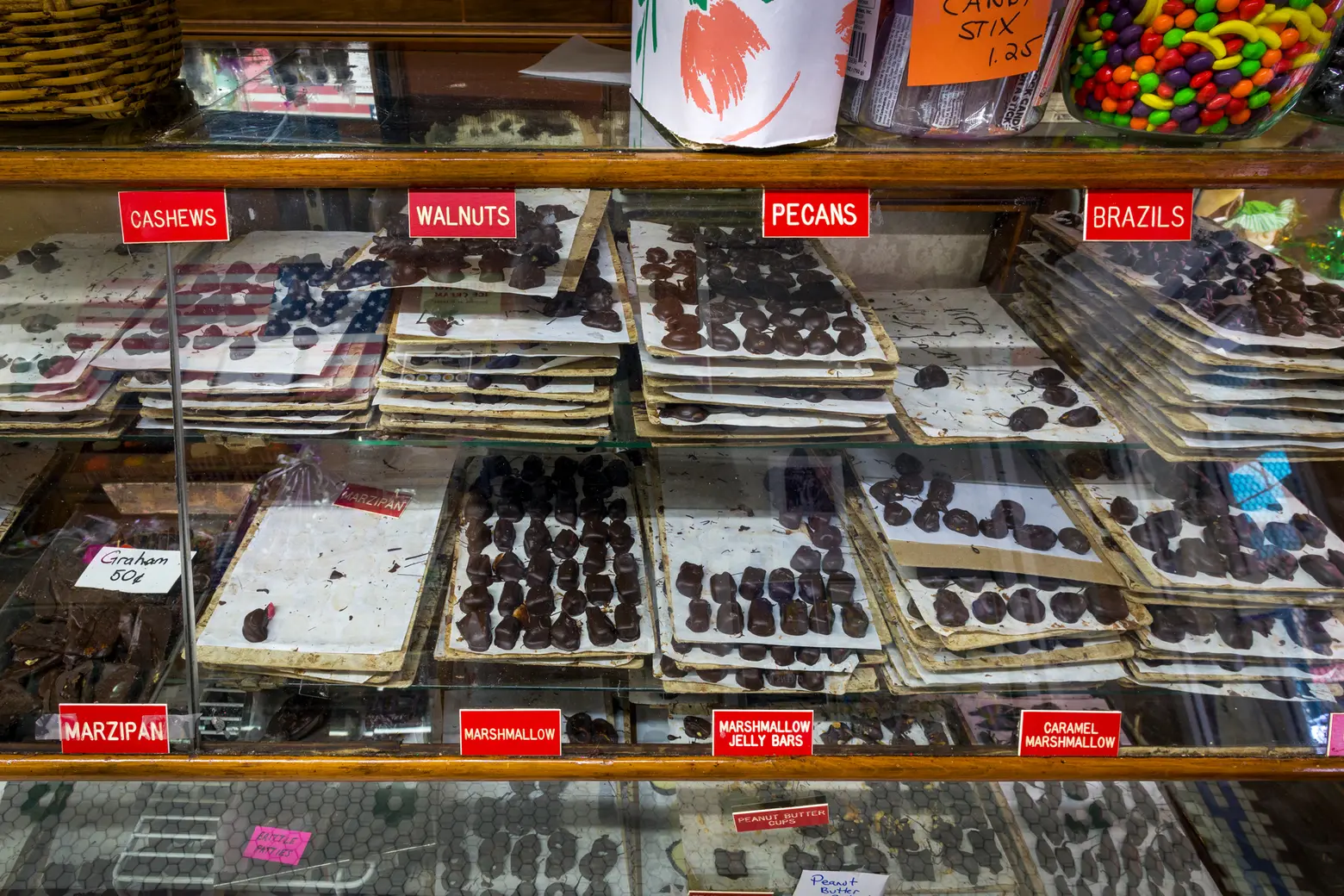
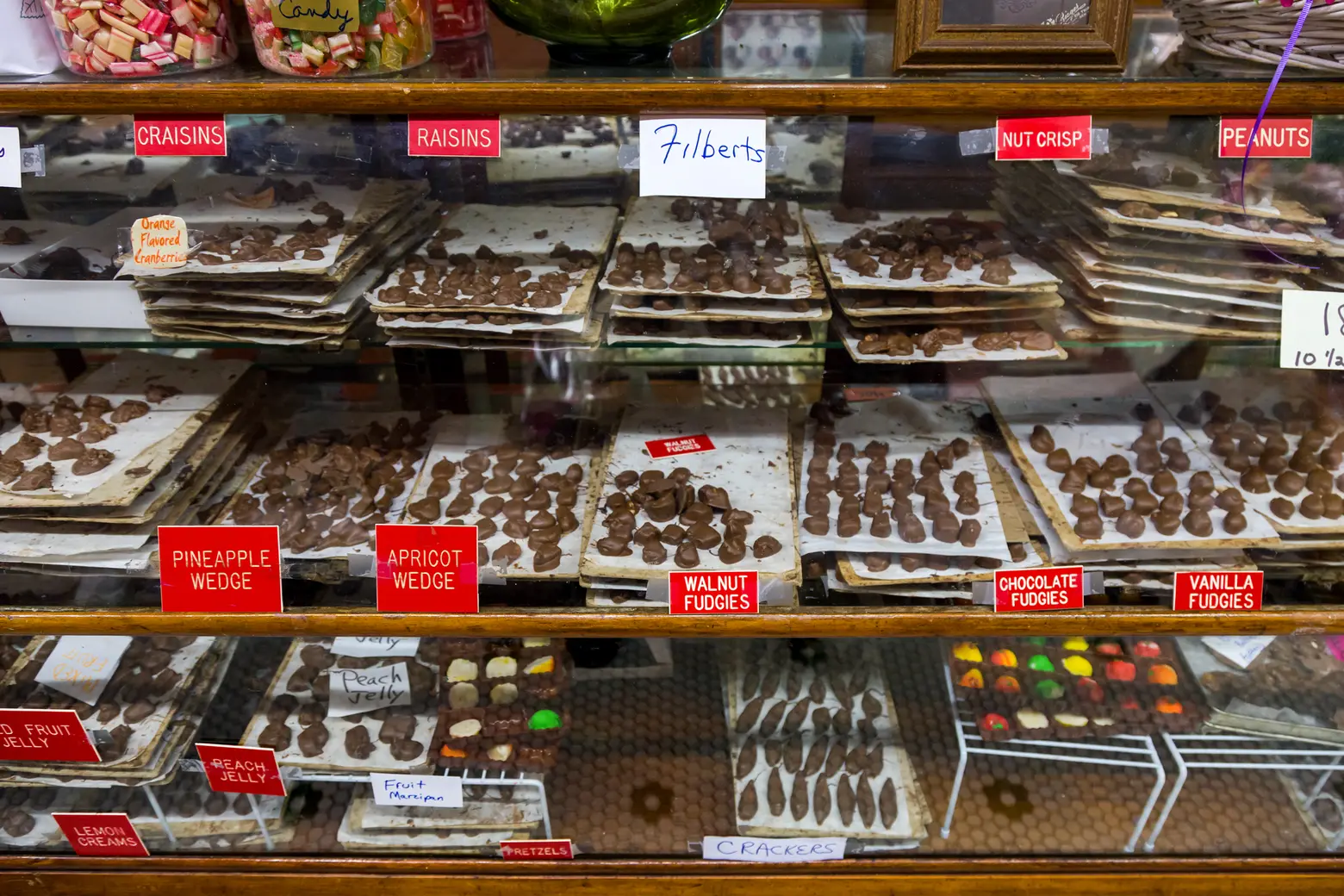
Chocolate is a luxury item, but I keep our prices reasonable. We are trying to hold on, and if my grandfather hadn’t bought the building, I probably wouldn’t be here. I charge only $18 for a whole pound of chocolate fudgies, jellies, marshmallows, fruits or nuts. I care about my community and always want kids to be able to come in after school and buy something even when they only have $1 in their hands.
We used to sell homemade ice cream and had a large wooden counter with stools in front where people would sit down. We stopped selling ice cream in 1984 because my father developed arthritis and the cold really bothered him. Since I had never learned how to make the ice cream myself, I stopped selling it.
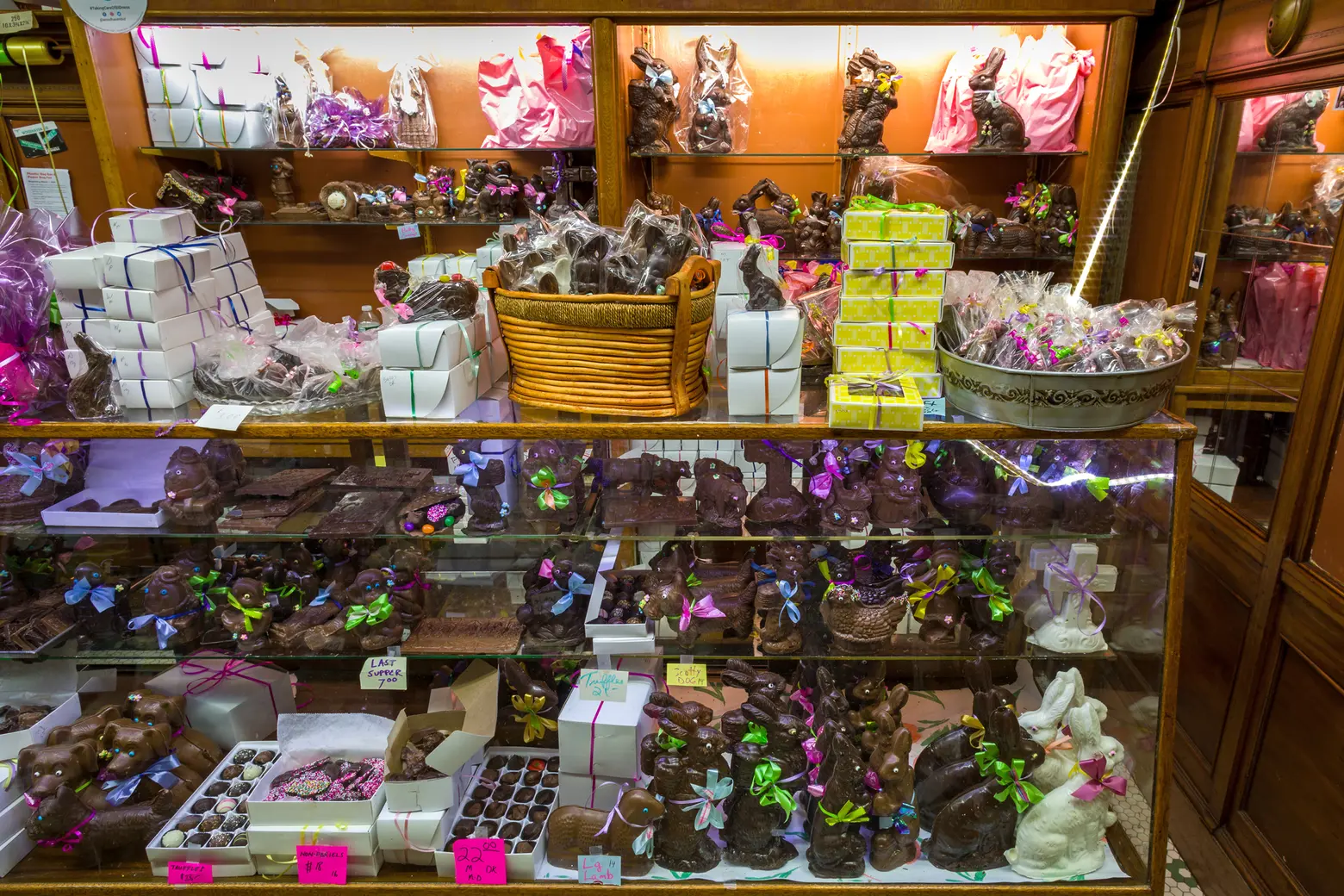
Now, we are closed during the summer in July and August because chocolate and caramel and many of the candies I make don’t do well in the heat. I would have to air-condition the store well and also add preservatives to my candy to make them last longer, which I absolutely will not do. In every other kind of candy you buy commercially, there is a list of preservatives a mile long, but I don’t use any. I also use only high-quality ingredients, and I don’t cut corners. For instance, the caramel should only be made with heavy cream and milk, not water!
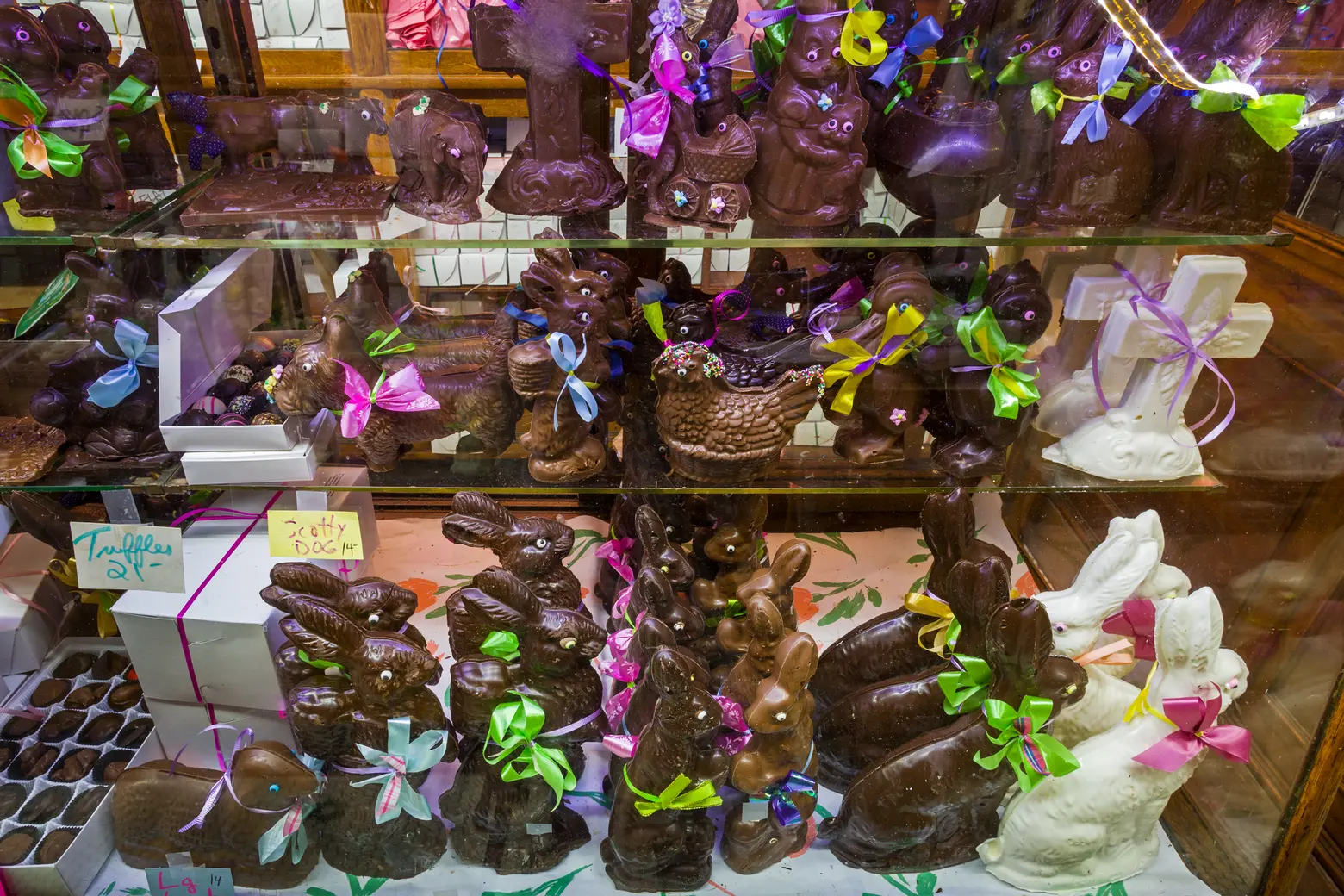
My busiest time of the year is Christmas and Easter so after April, I slowly reduce my inventory.
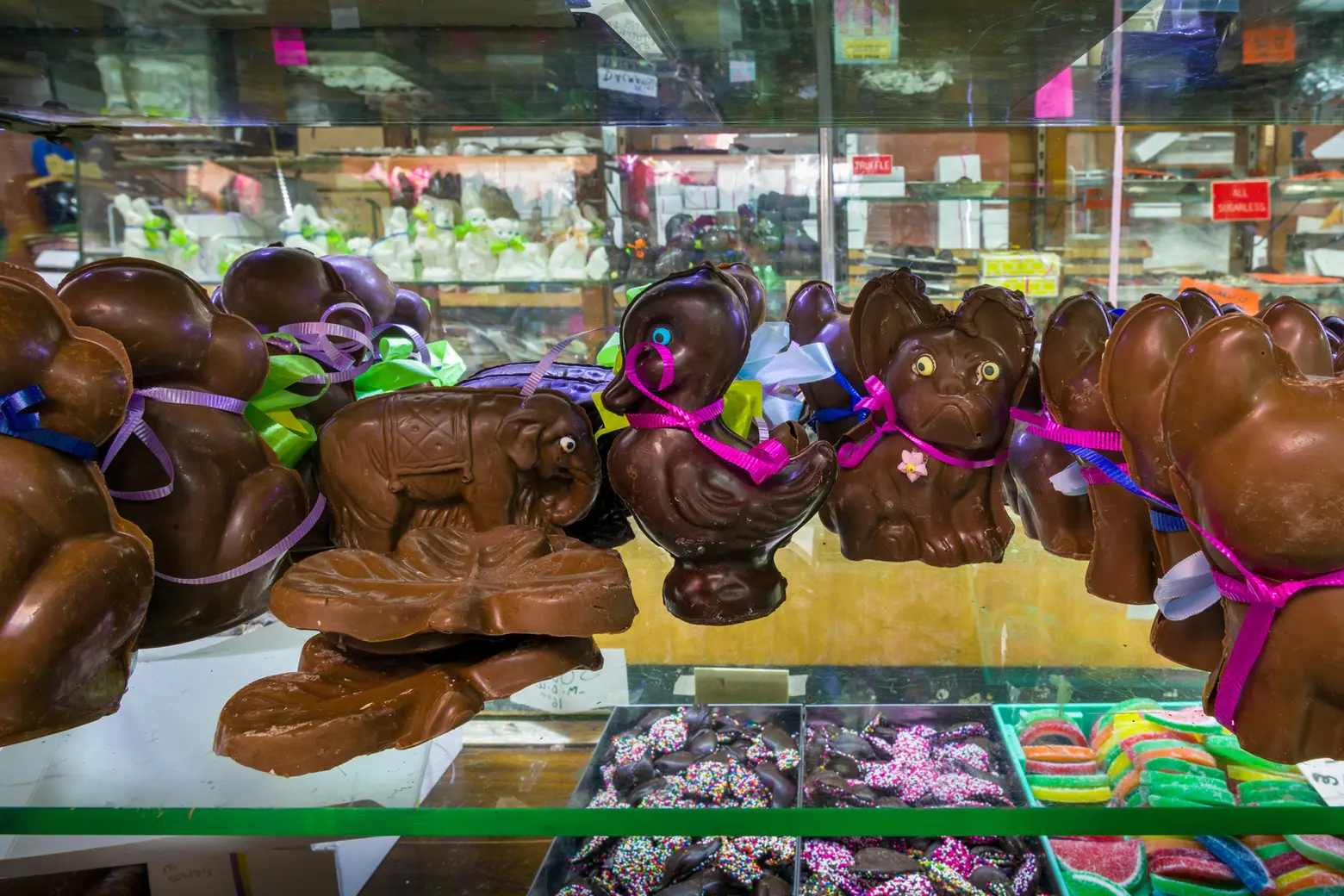
Recently, I created a website for the store, and I sell products online because having a retail business now without a website is difficult. Years ago, it wasn’t a problem because there was so much street traffic… Now, most people who live in this neighborhood need to have a double-income family and mothers are working, not walking by anymore with their kids. They also drive everywhere to shop, and on this block, it’s difficult to find parking.
The biggest problem for me right now is the state of emergency the city is now facing. I usually fill the store with Easter candies and chocolate bunnies, but now I don’t know how many to make. I hope people will at least order some through my website, and I am making deliveries, too. My grandfather and this shop survived through the Great Depression and I am hopeful I will survive this pandemic.
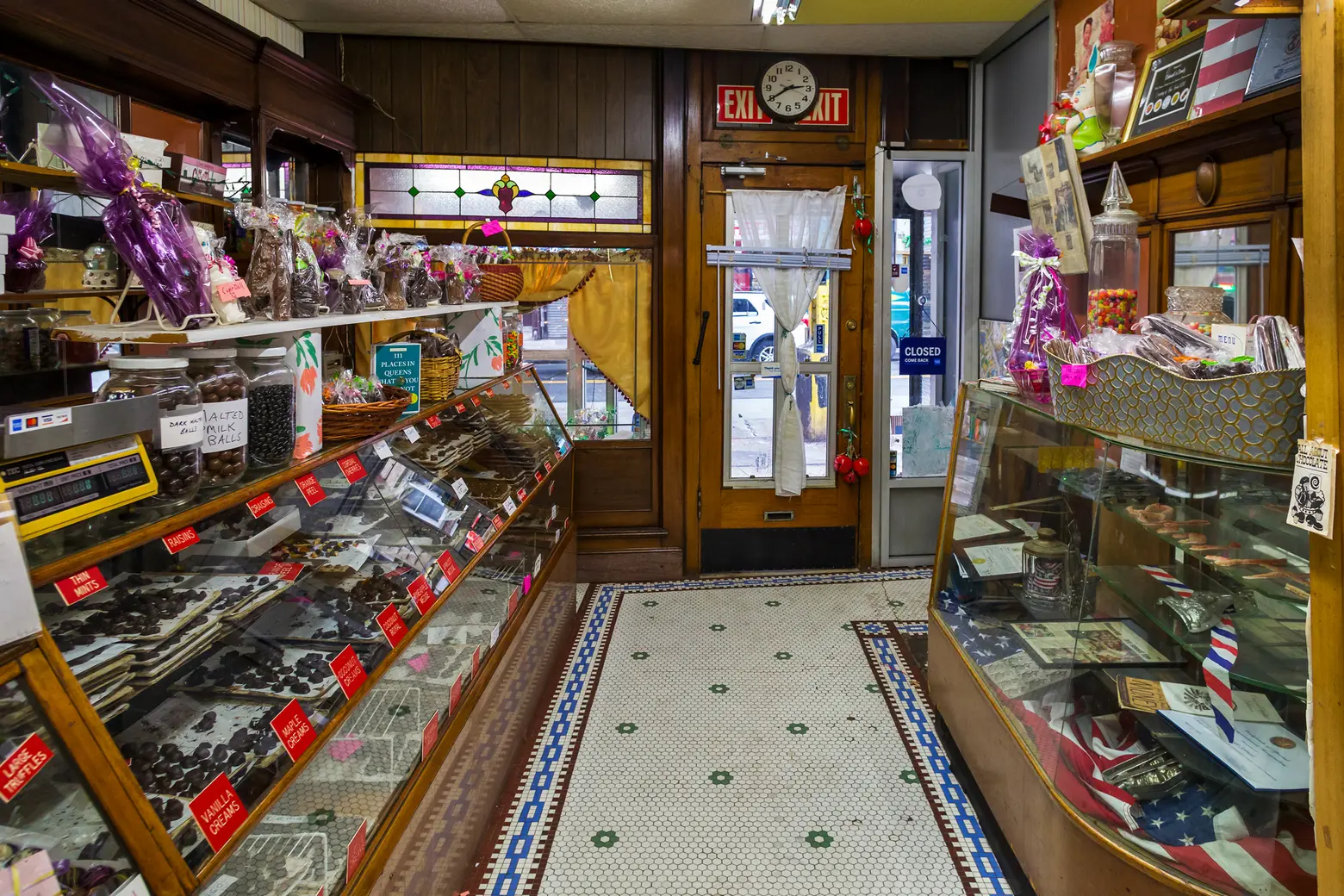
I do have a number of old-time customers who used to live in the neighborhood but moved away and still return here to buy candy that they remember from their childhood. To them, it’s like a step back in time. When they come inside the store, they can smell the homemade chocolate, and it brings them right back!
+++
To get even more behind-the-scenes details from Schmidt’s Candy, and see the step by step process of Margie making homemade chocolates, check out this video from James and Karla Murray. And place your orders here!
[This interview has been edited and condensed for clarity]
RELATED:
- Cannoli, cheesecake, and an East Village icon: See history in action at 125-year-old Veniero’s Pastry
- Pierogis, borscht, and Ukrainian history: Behind the scenes at East Village restaurant Veselka
- 102-year-old Orwasher’s Bakery is preserving NYC nostalgia while adapting to the times
All photos by James and Karla Murray exclusively for 6sqft. Photos are not to be reproduced without written permission from 6sqft.
